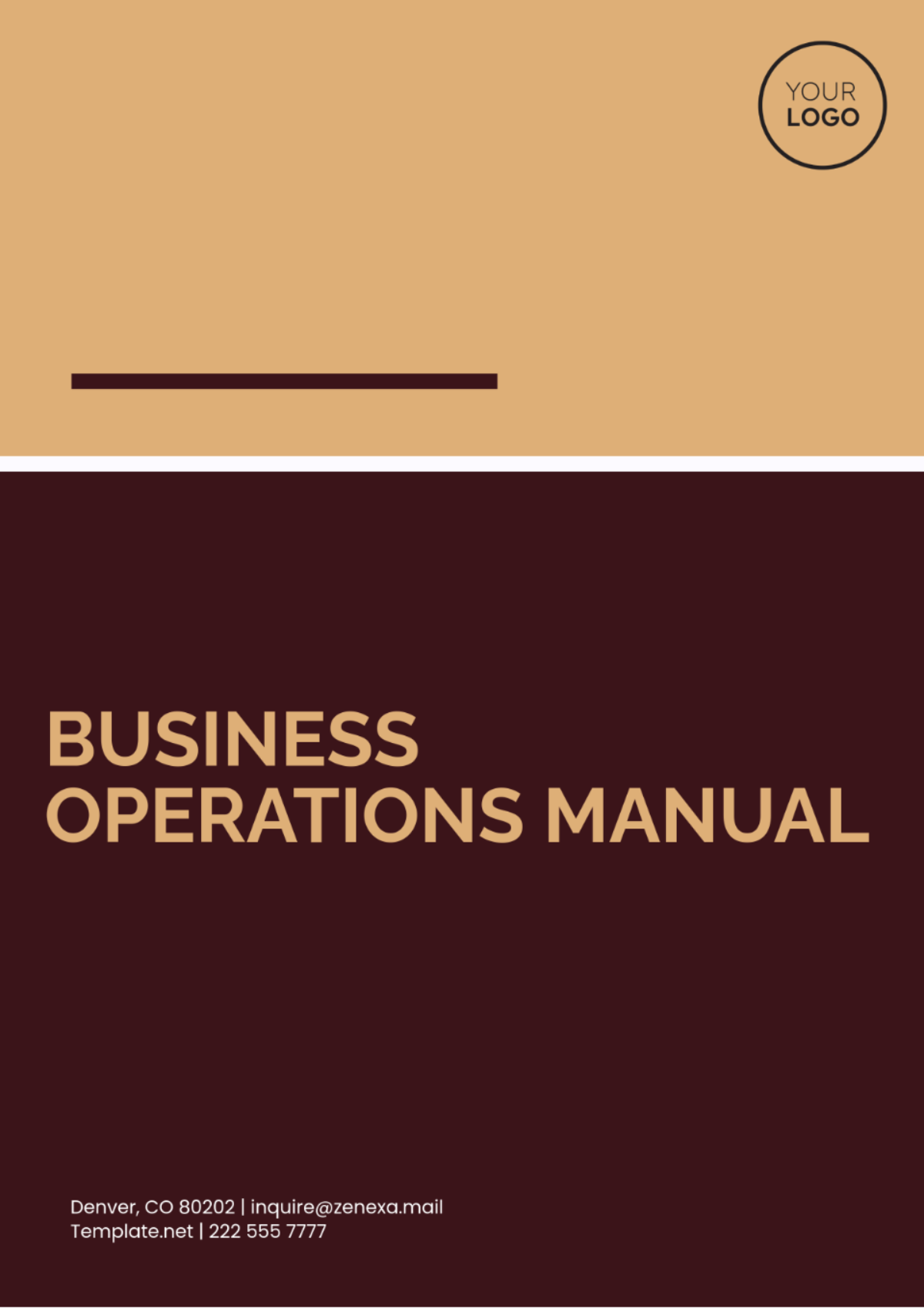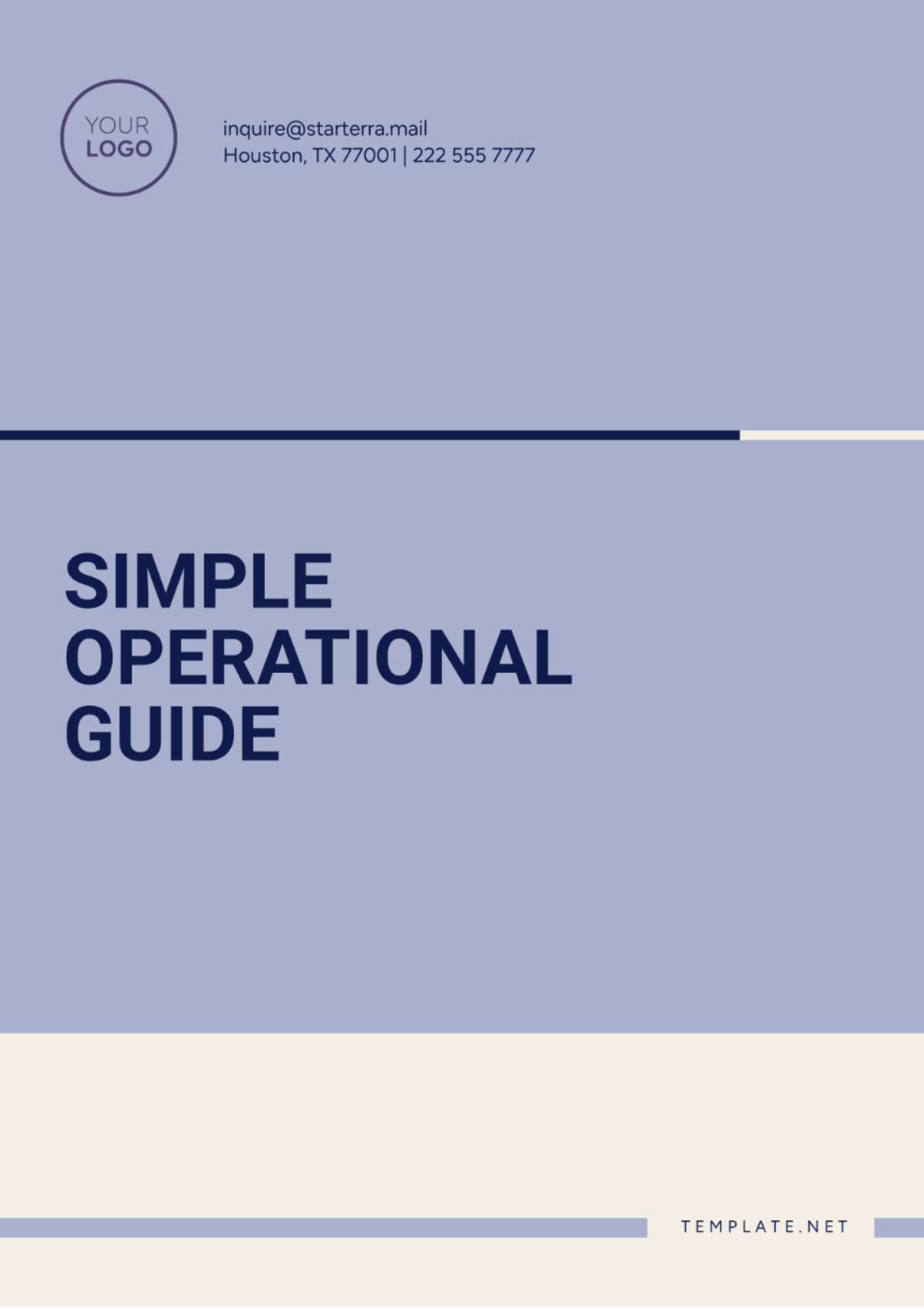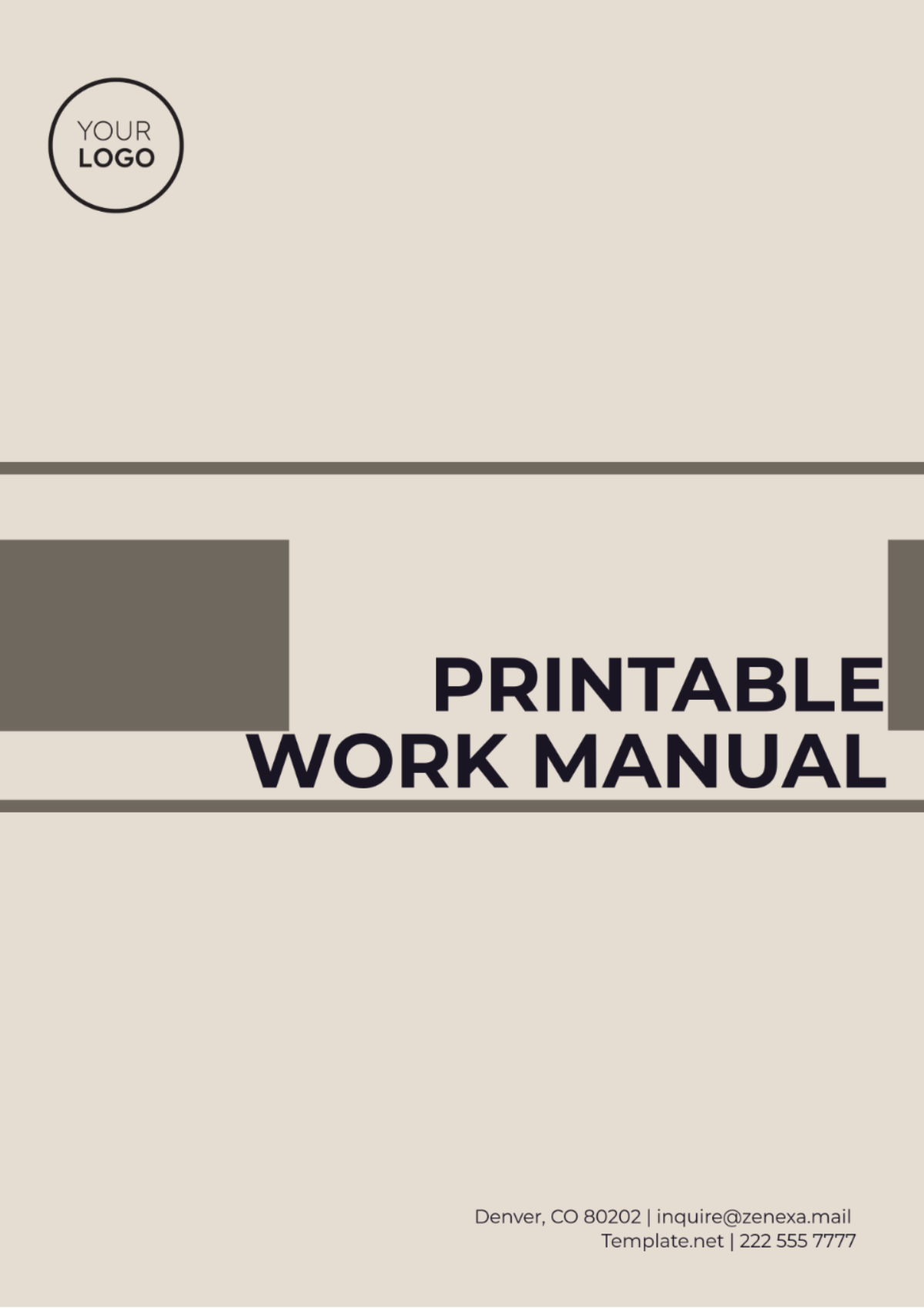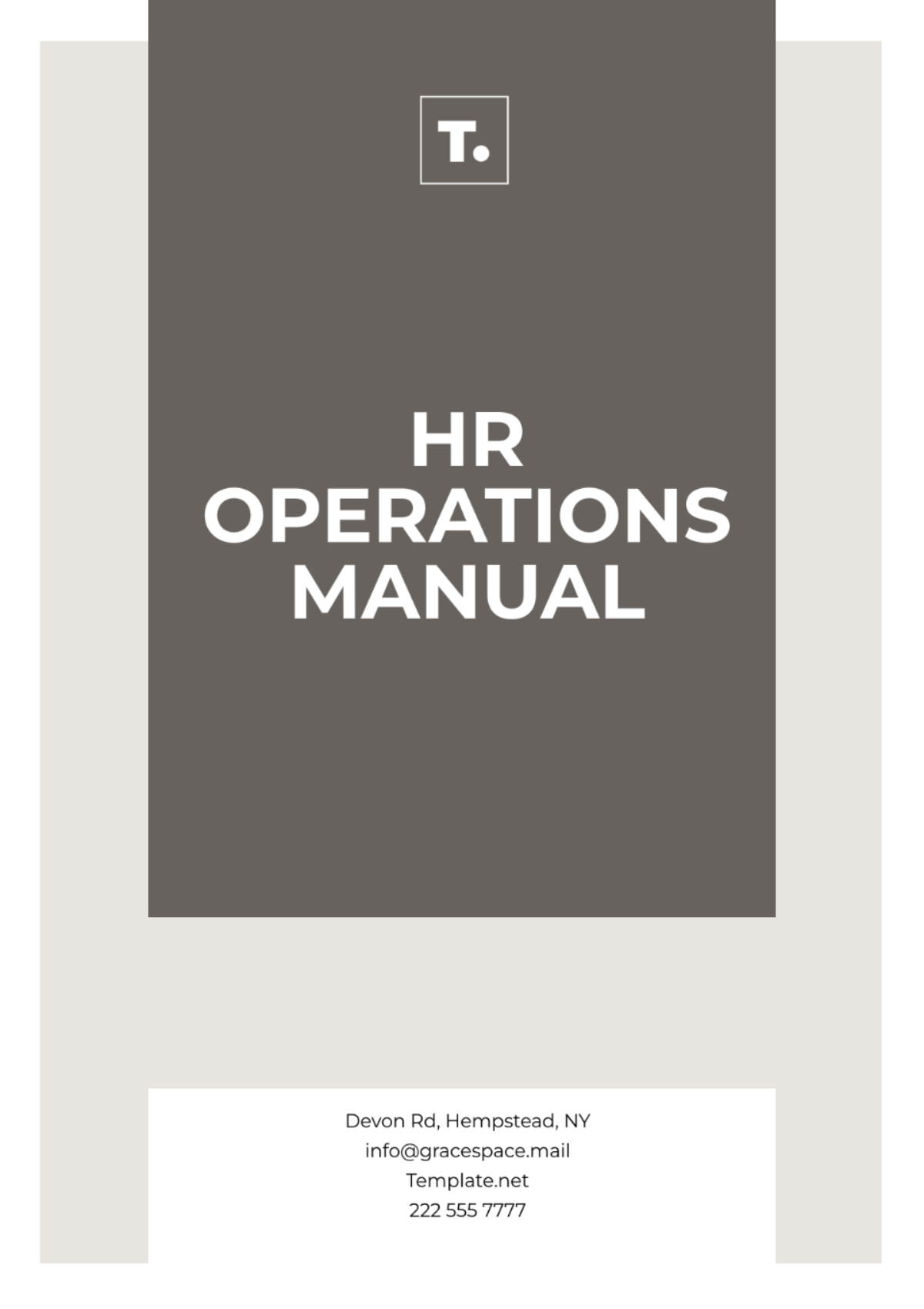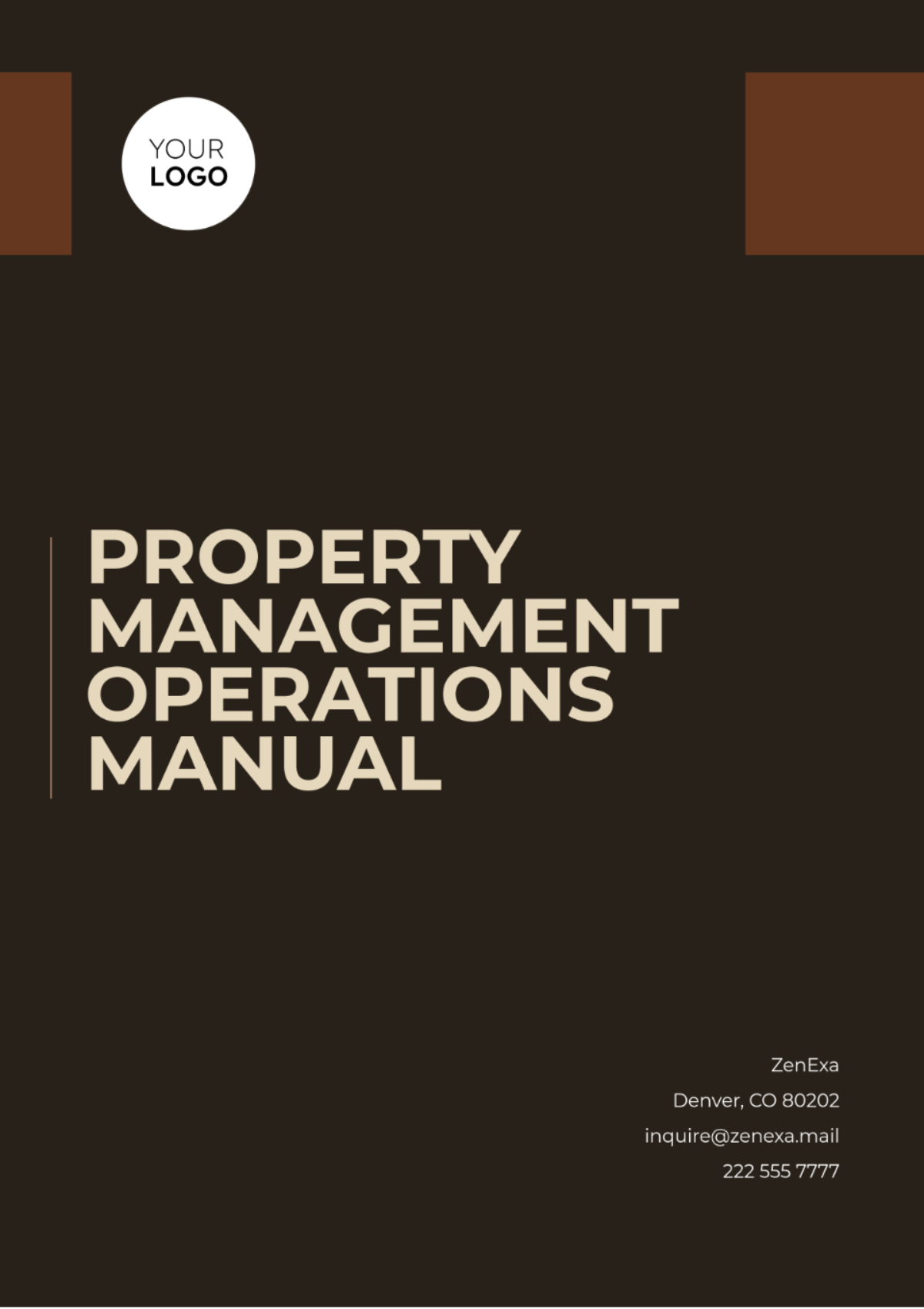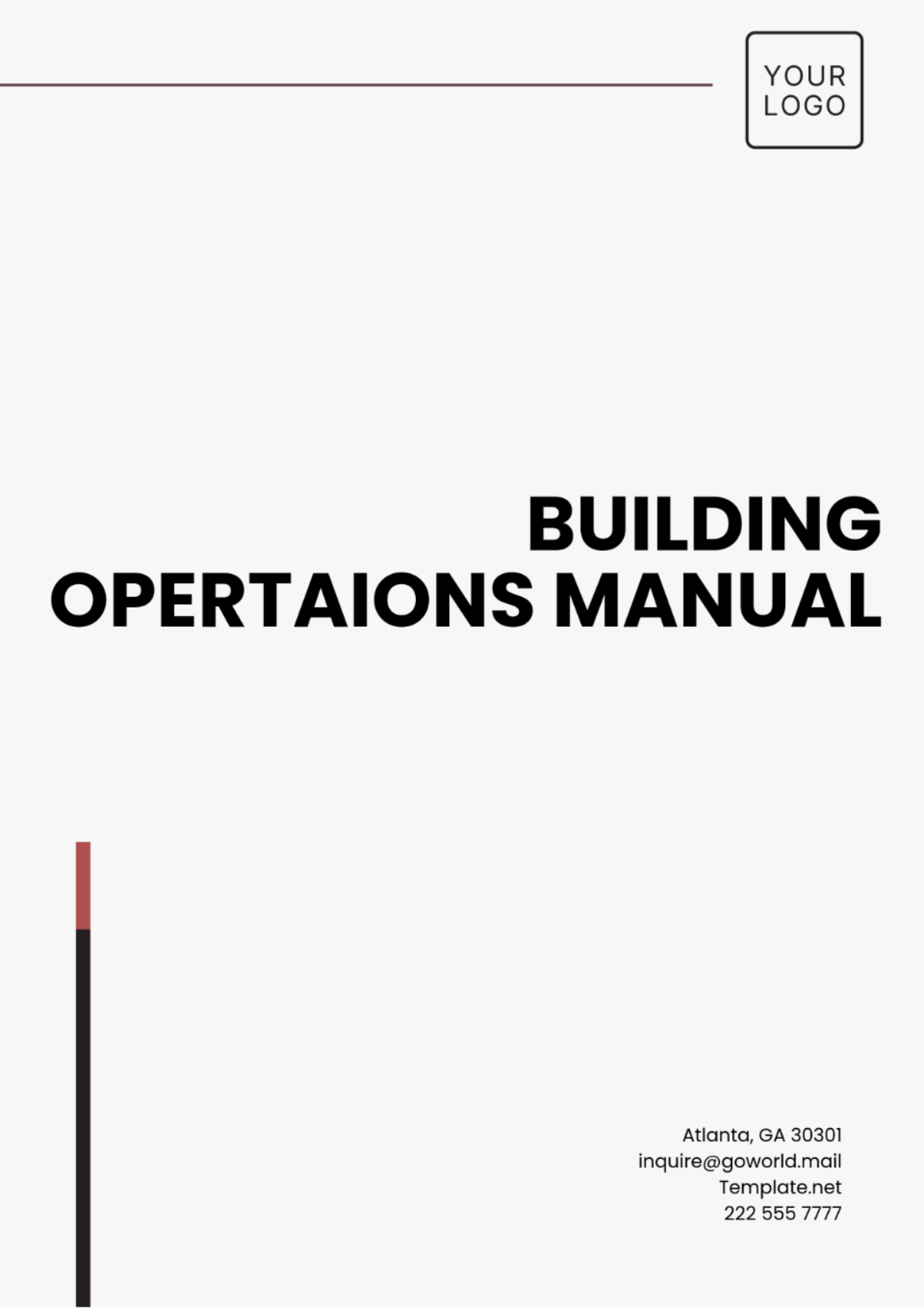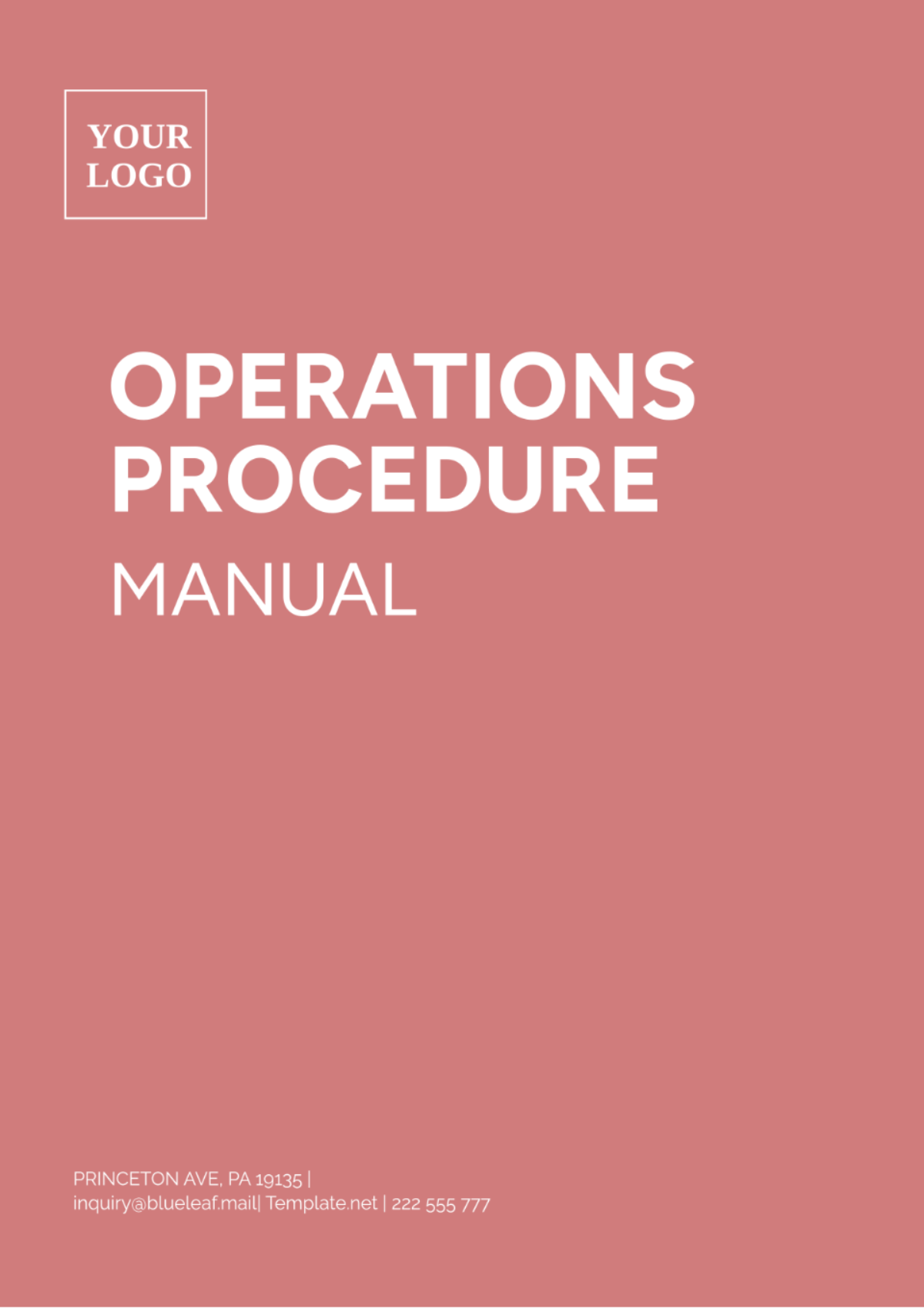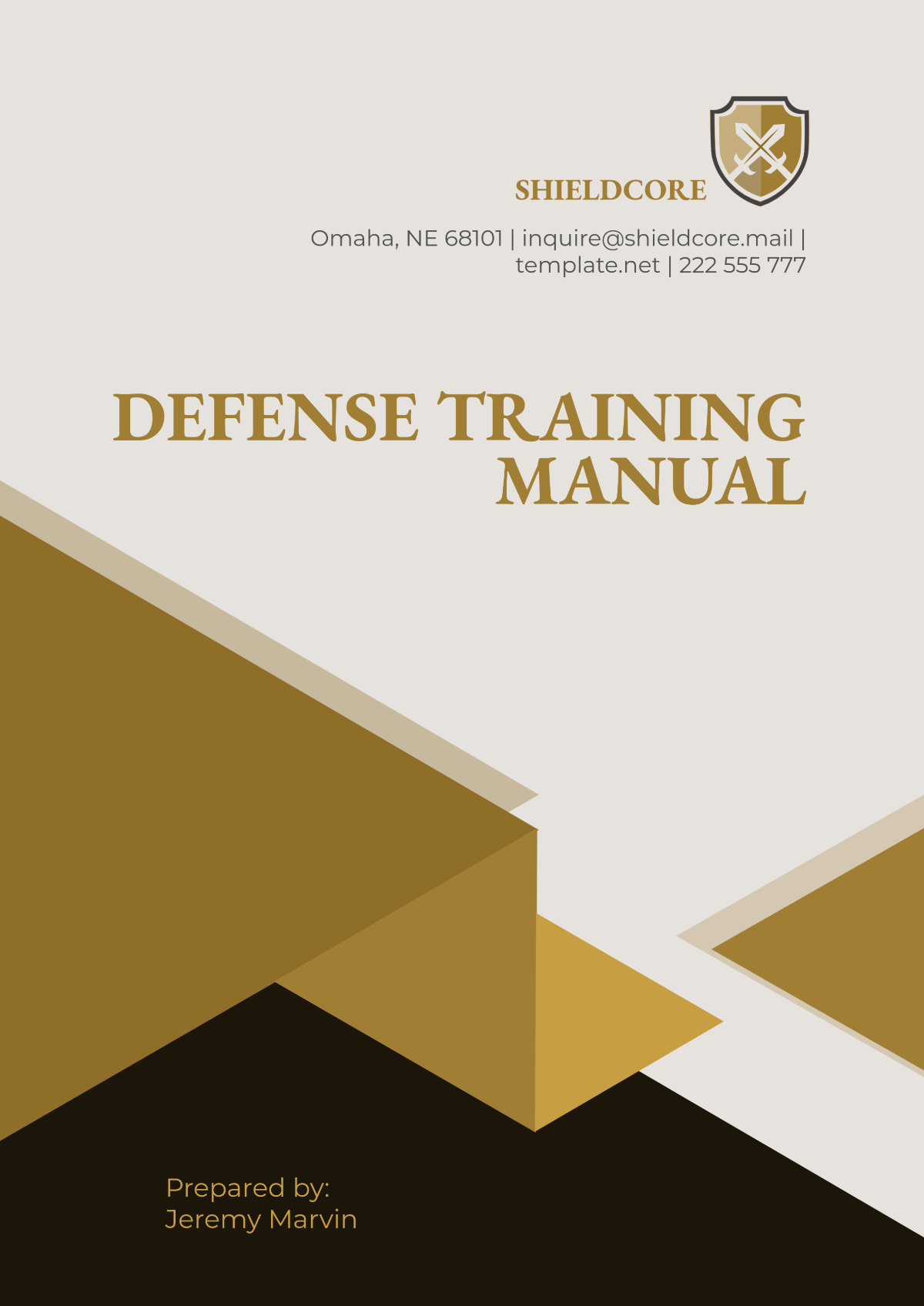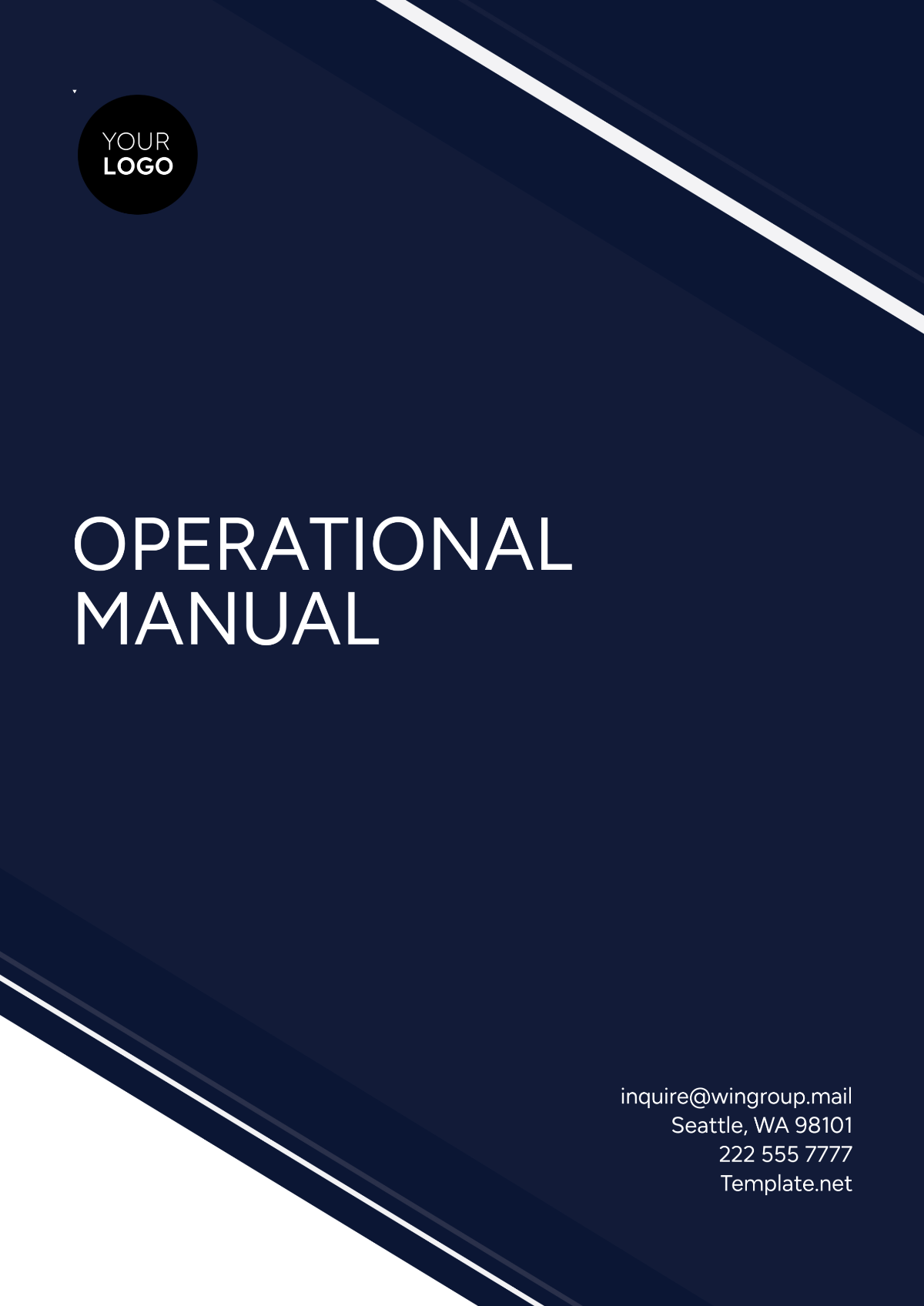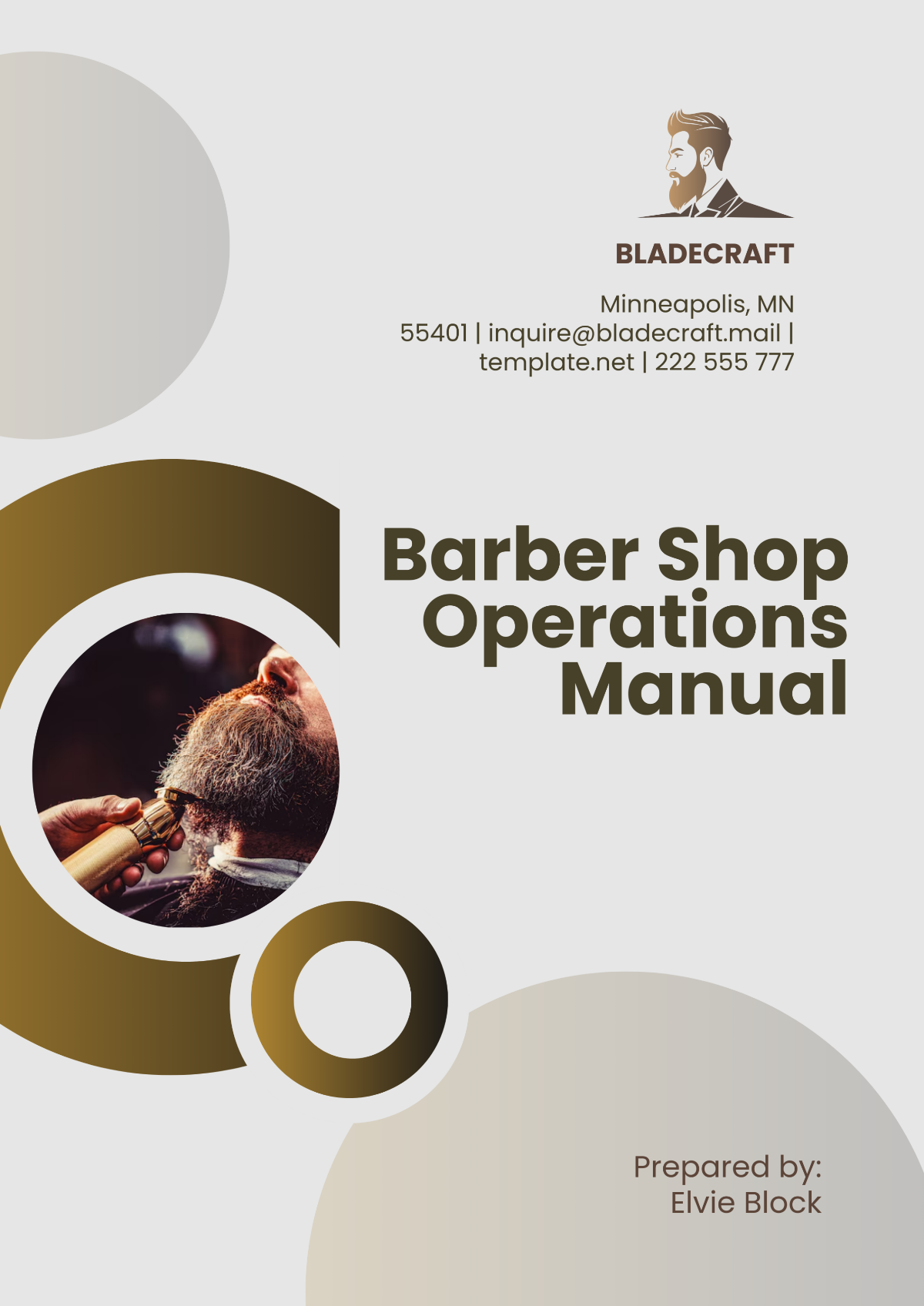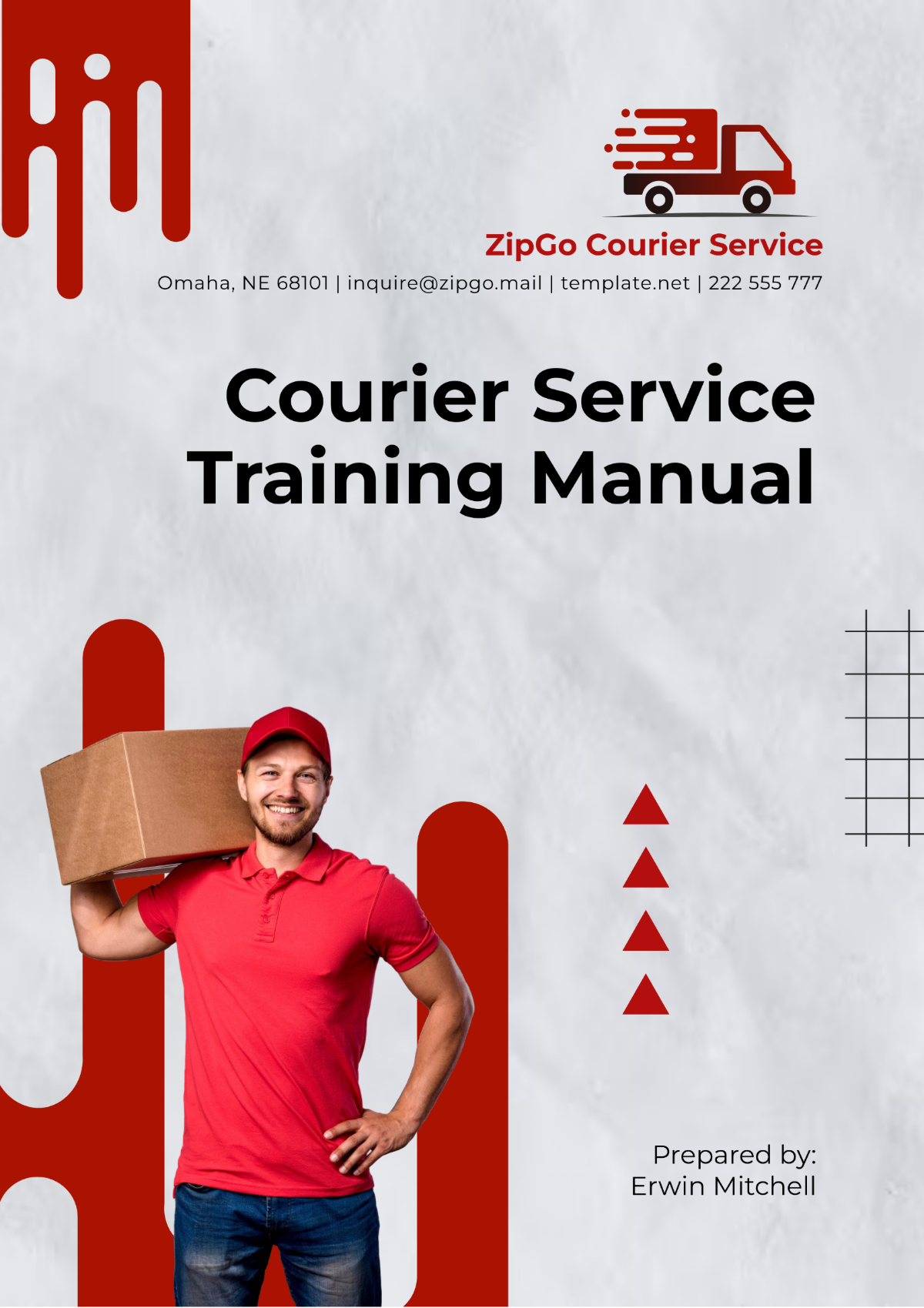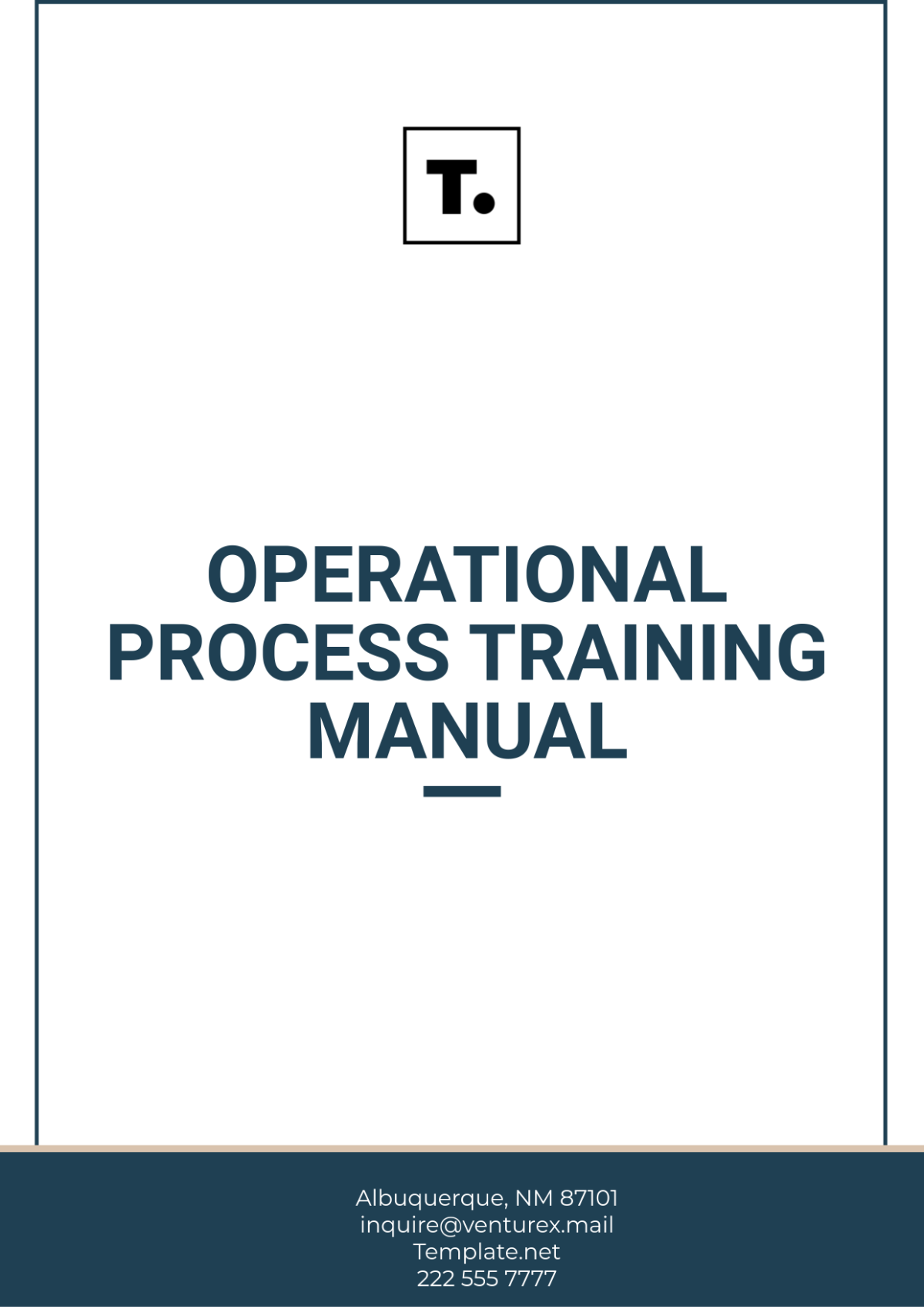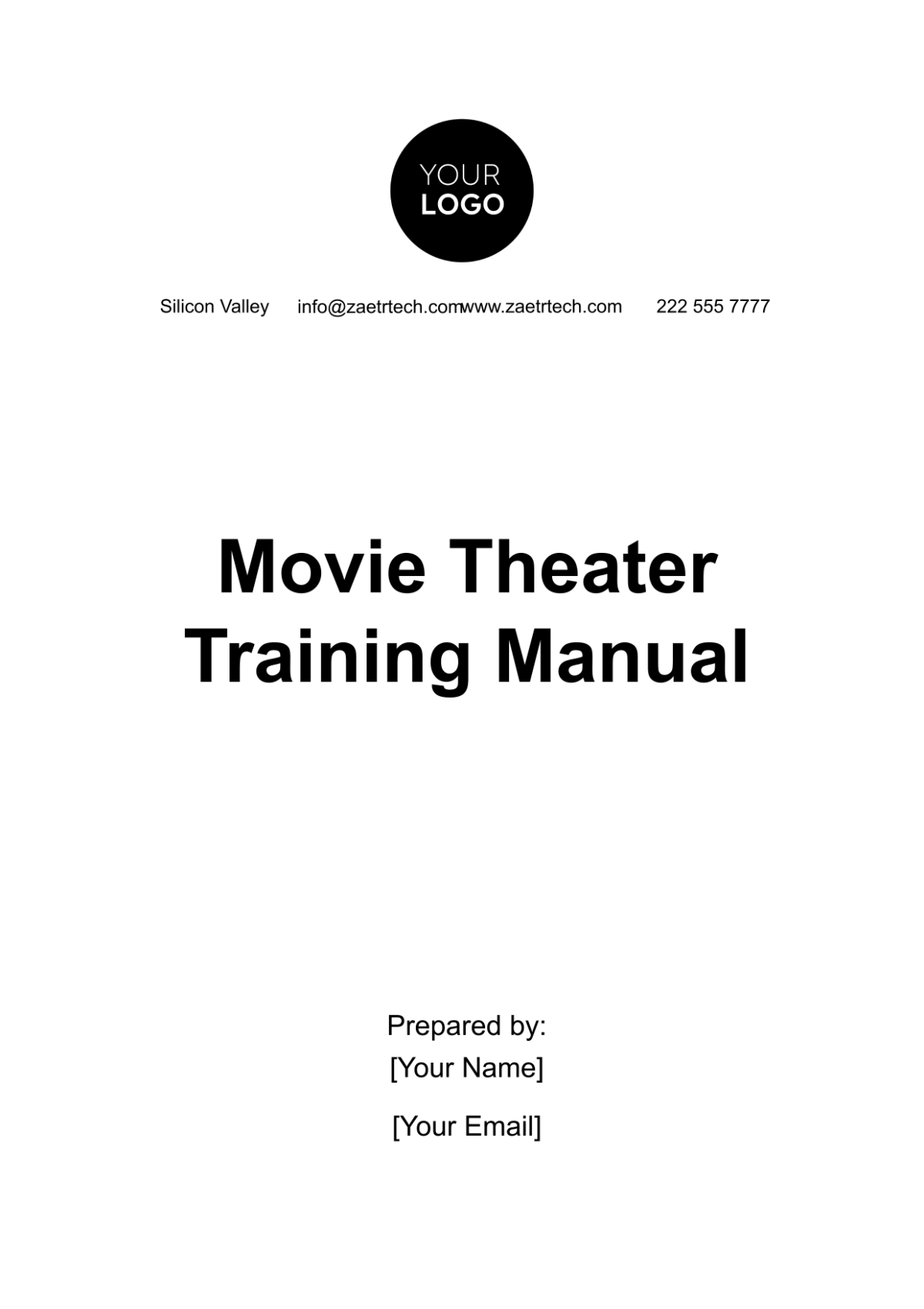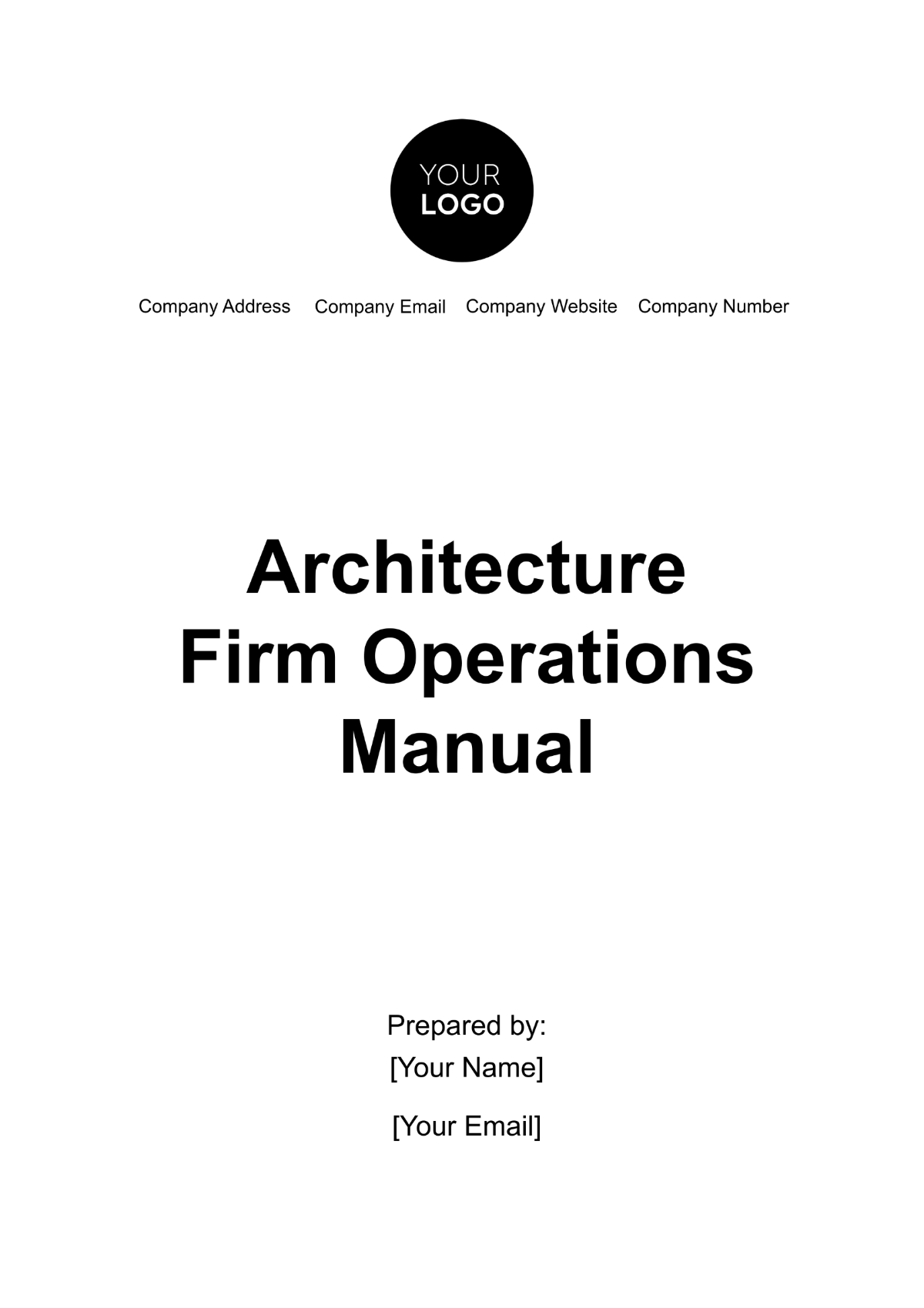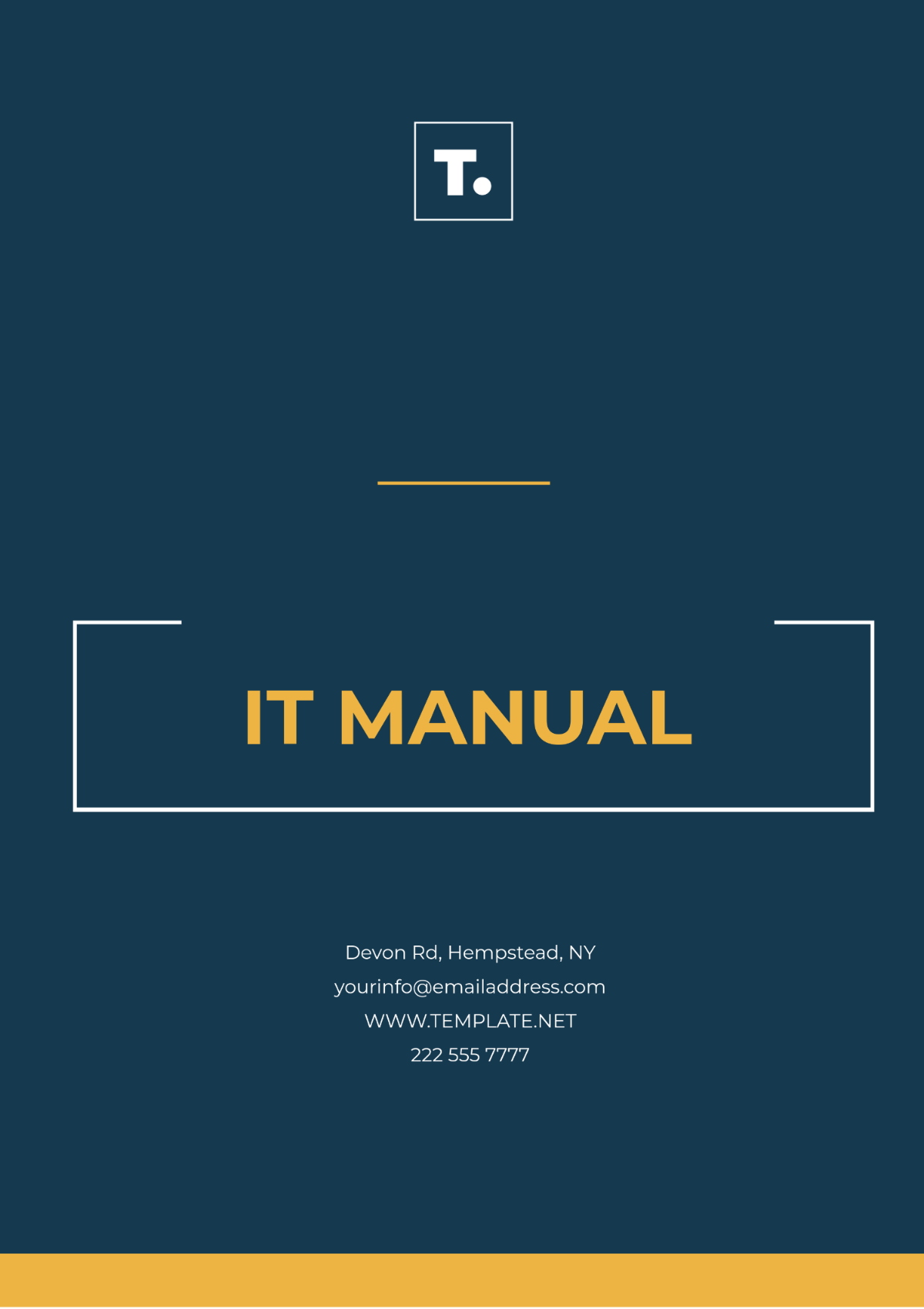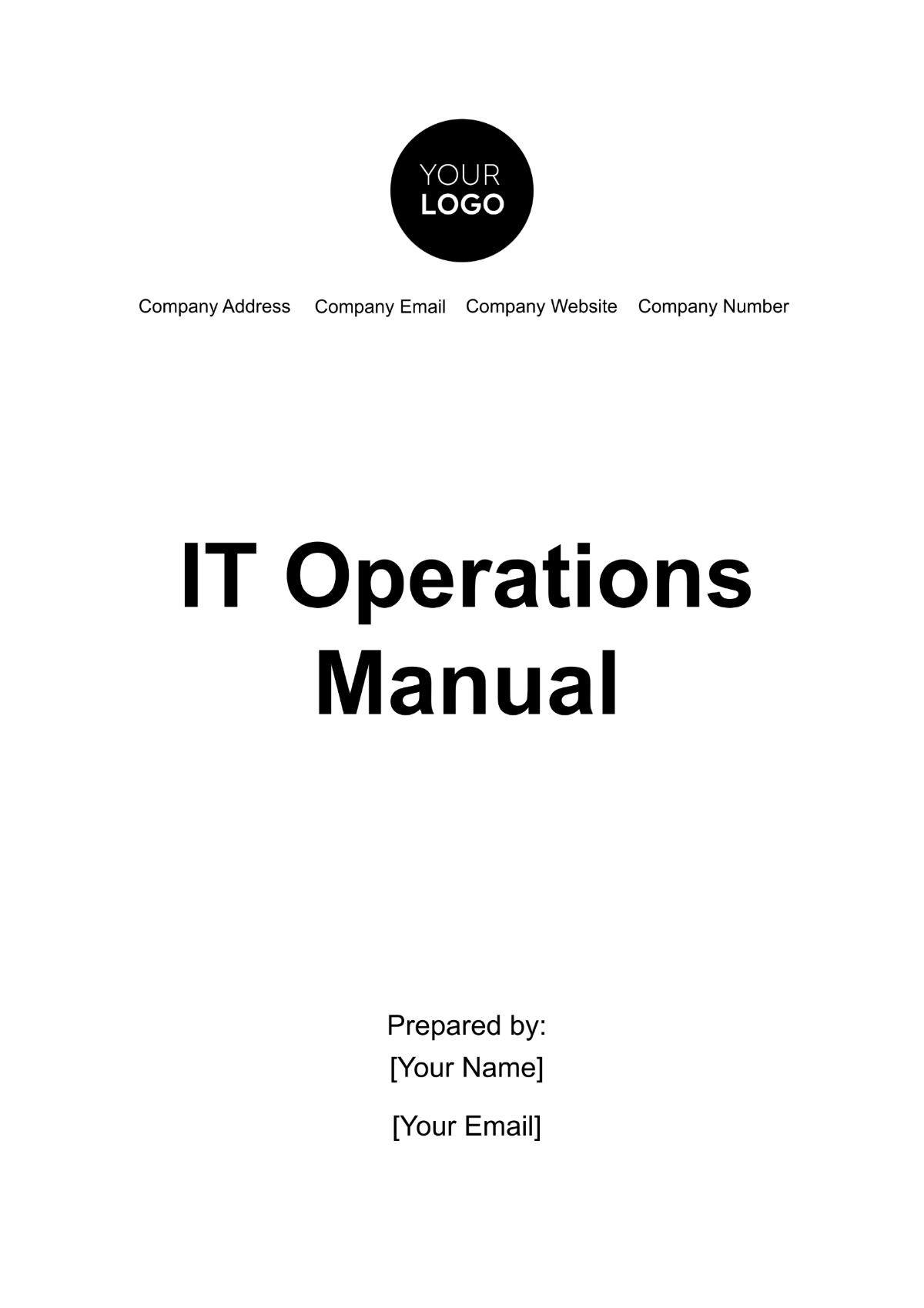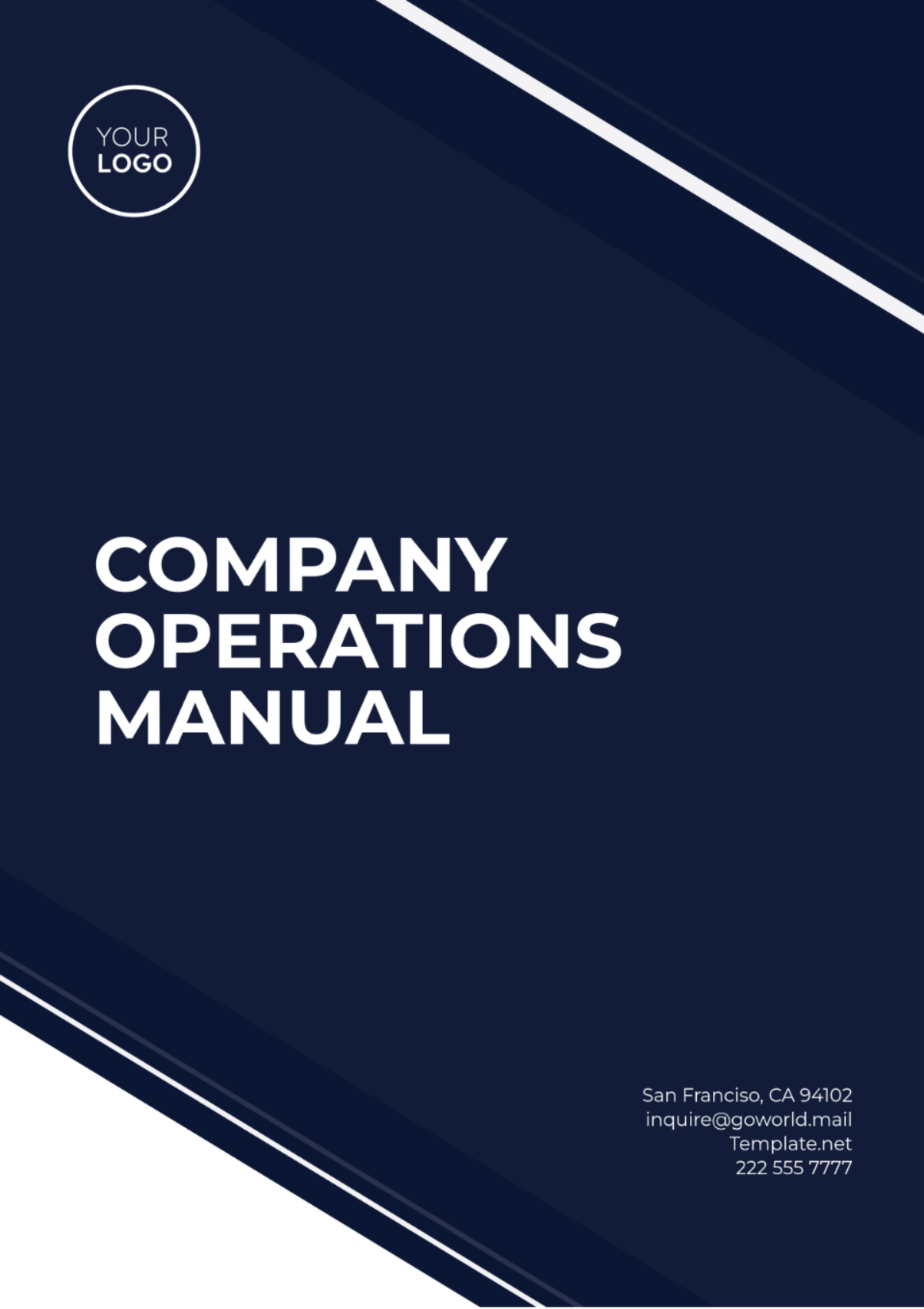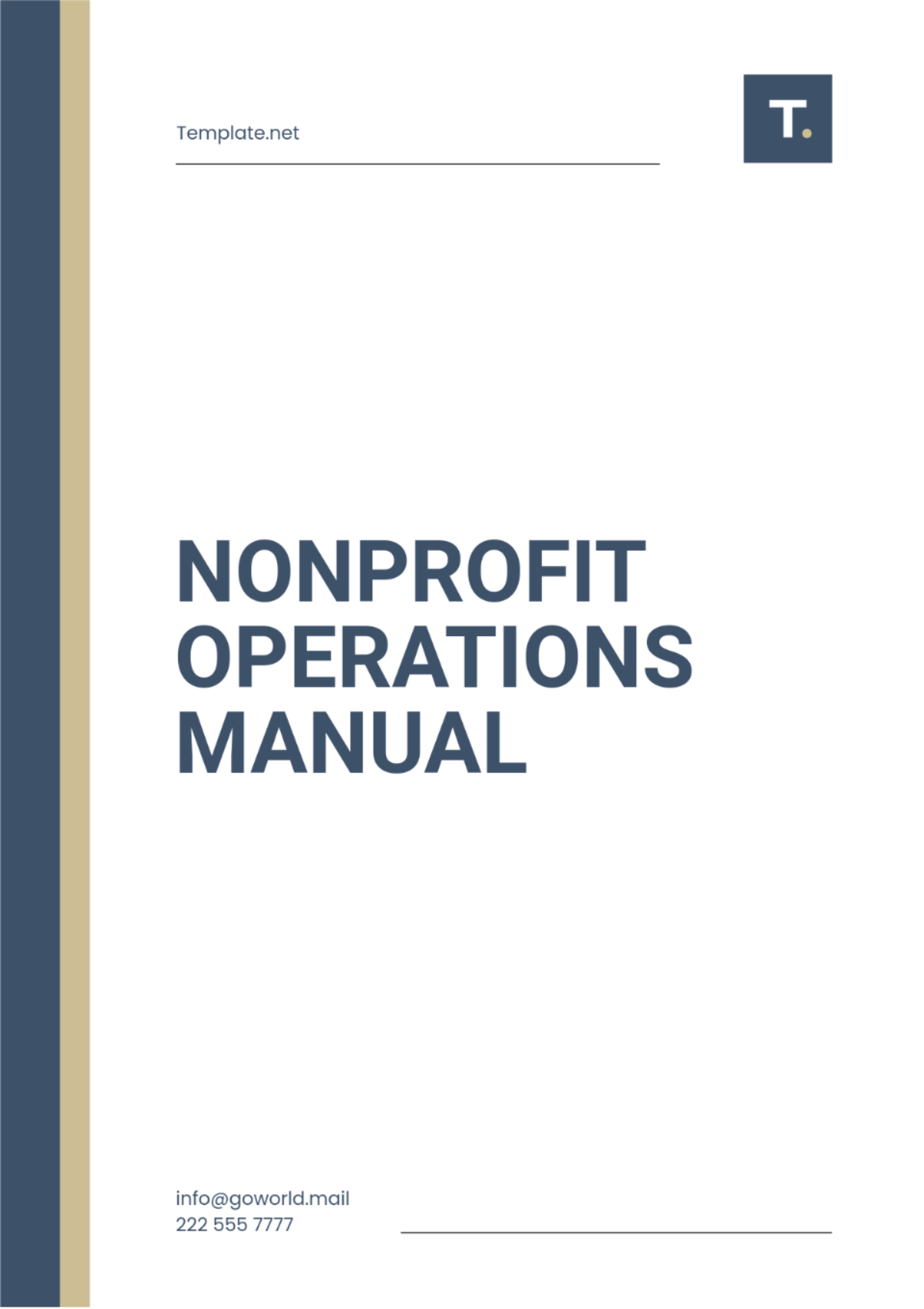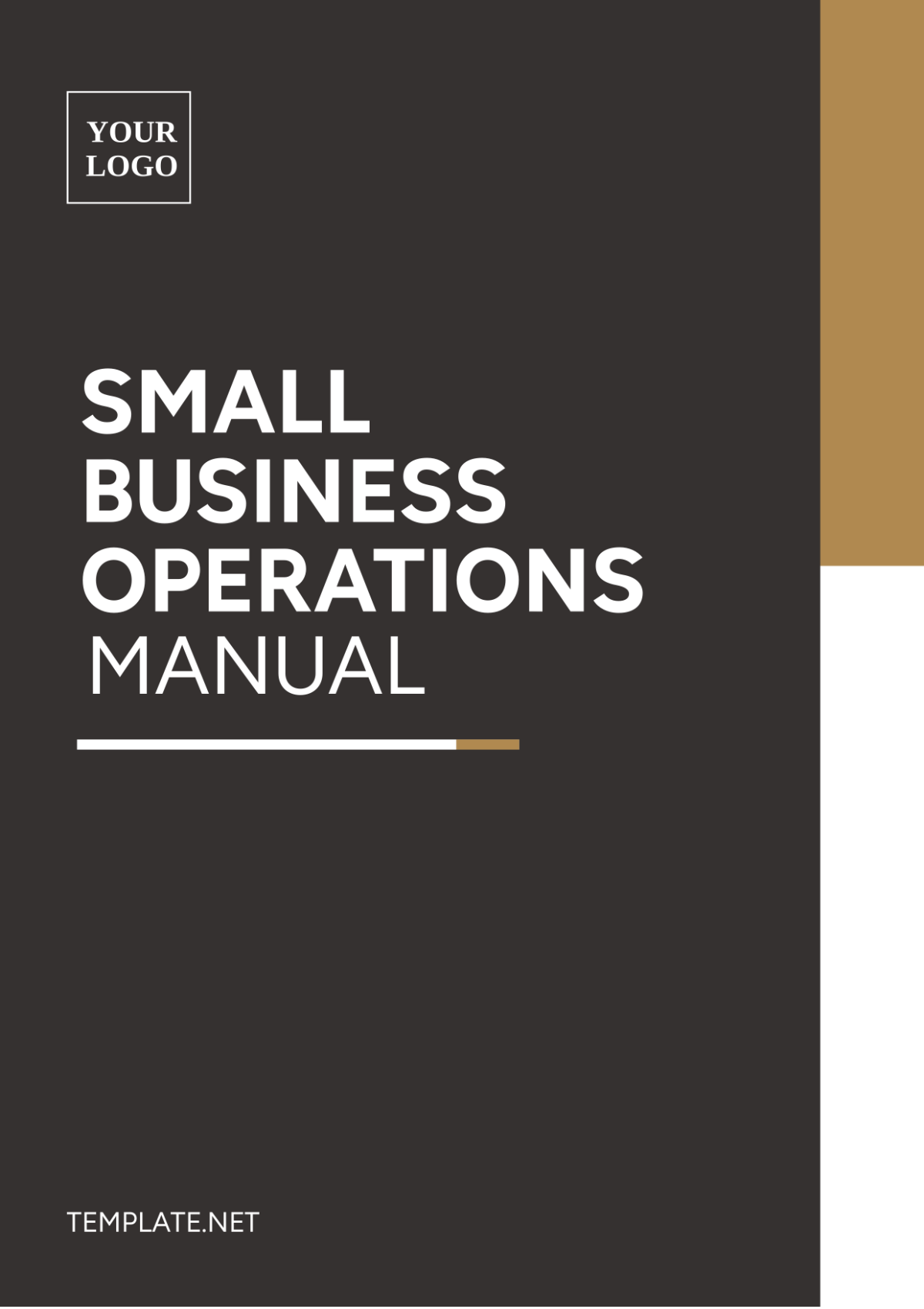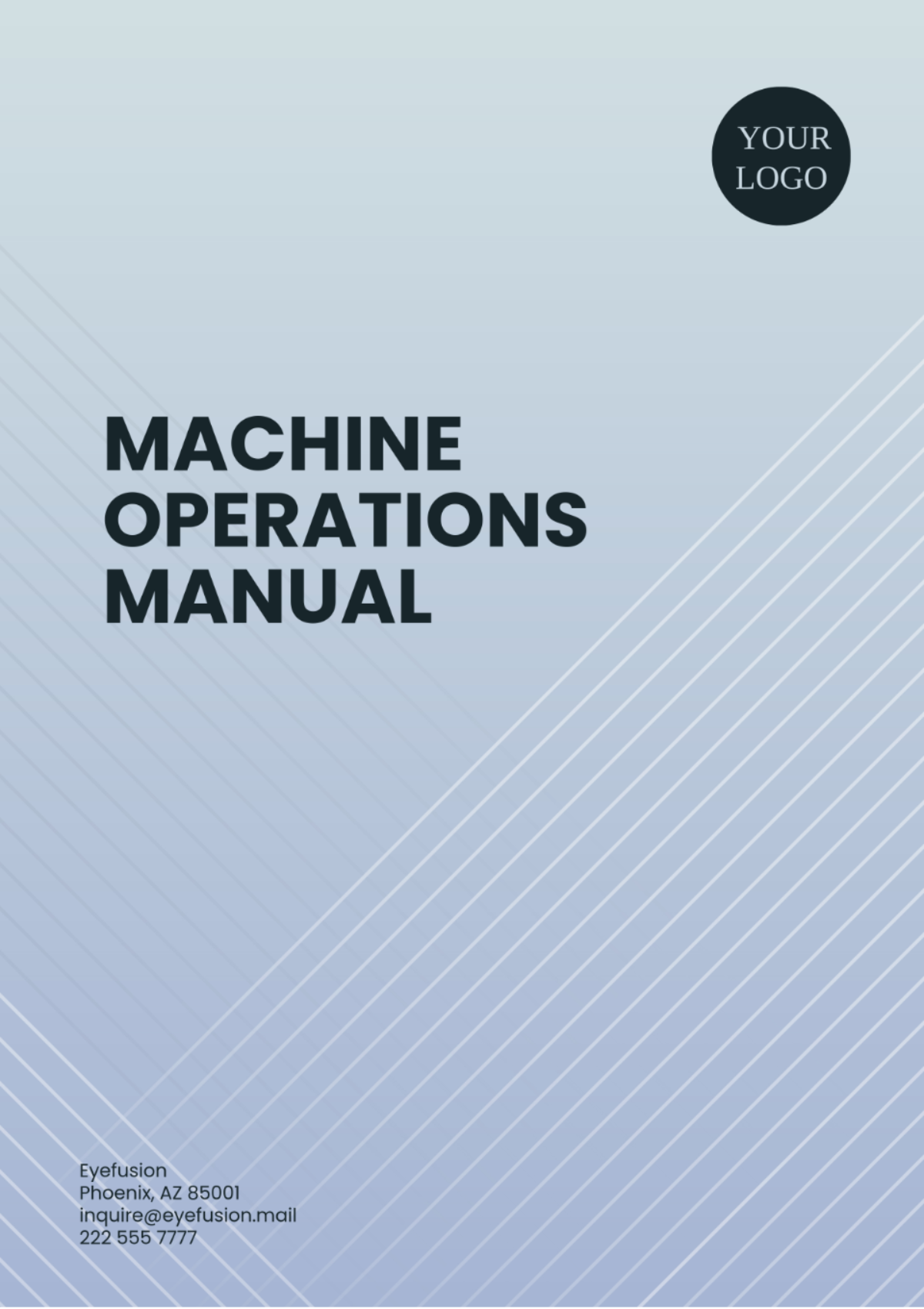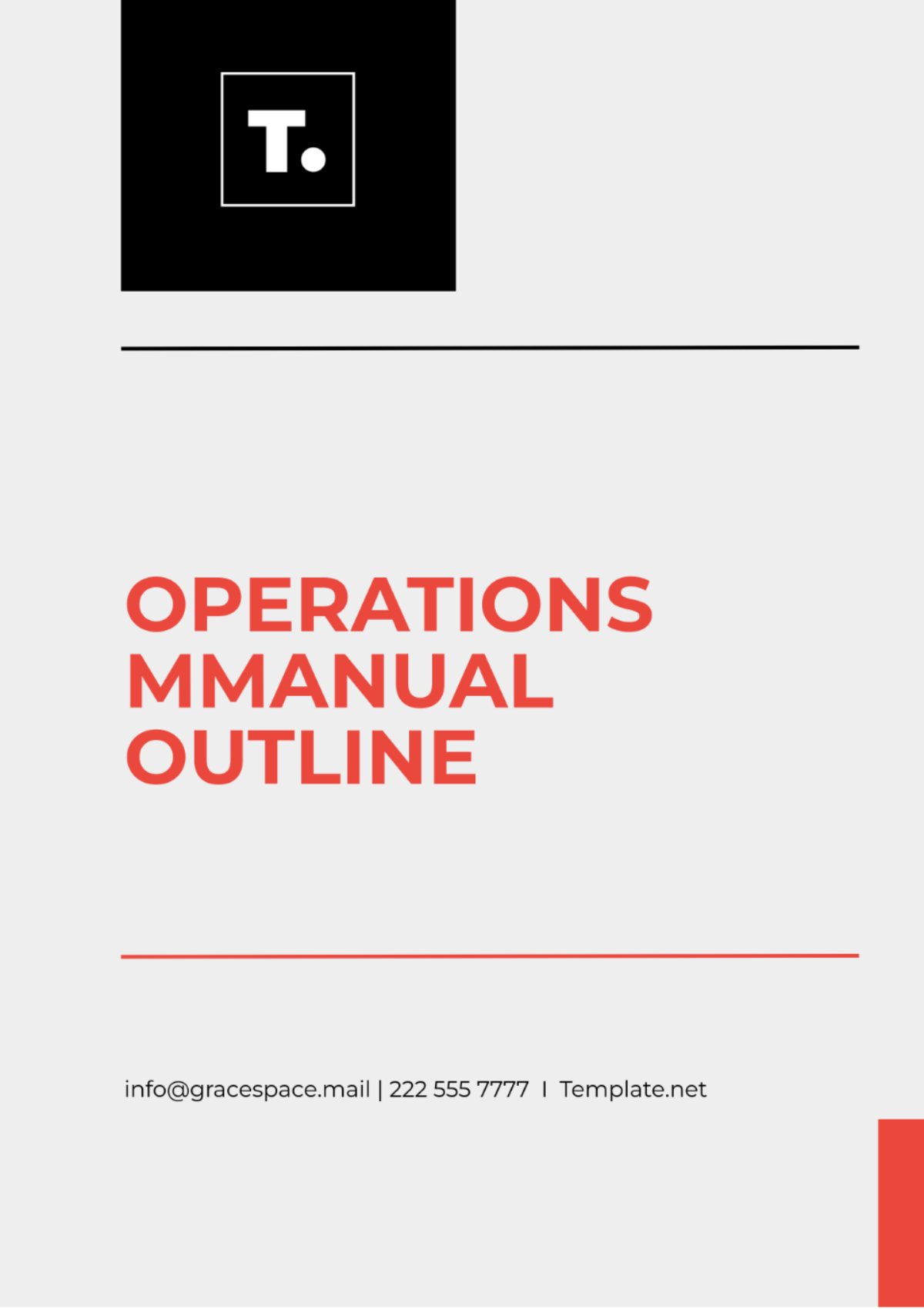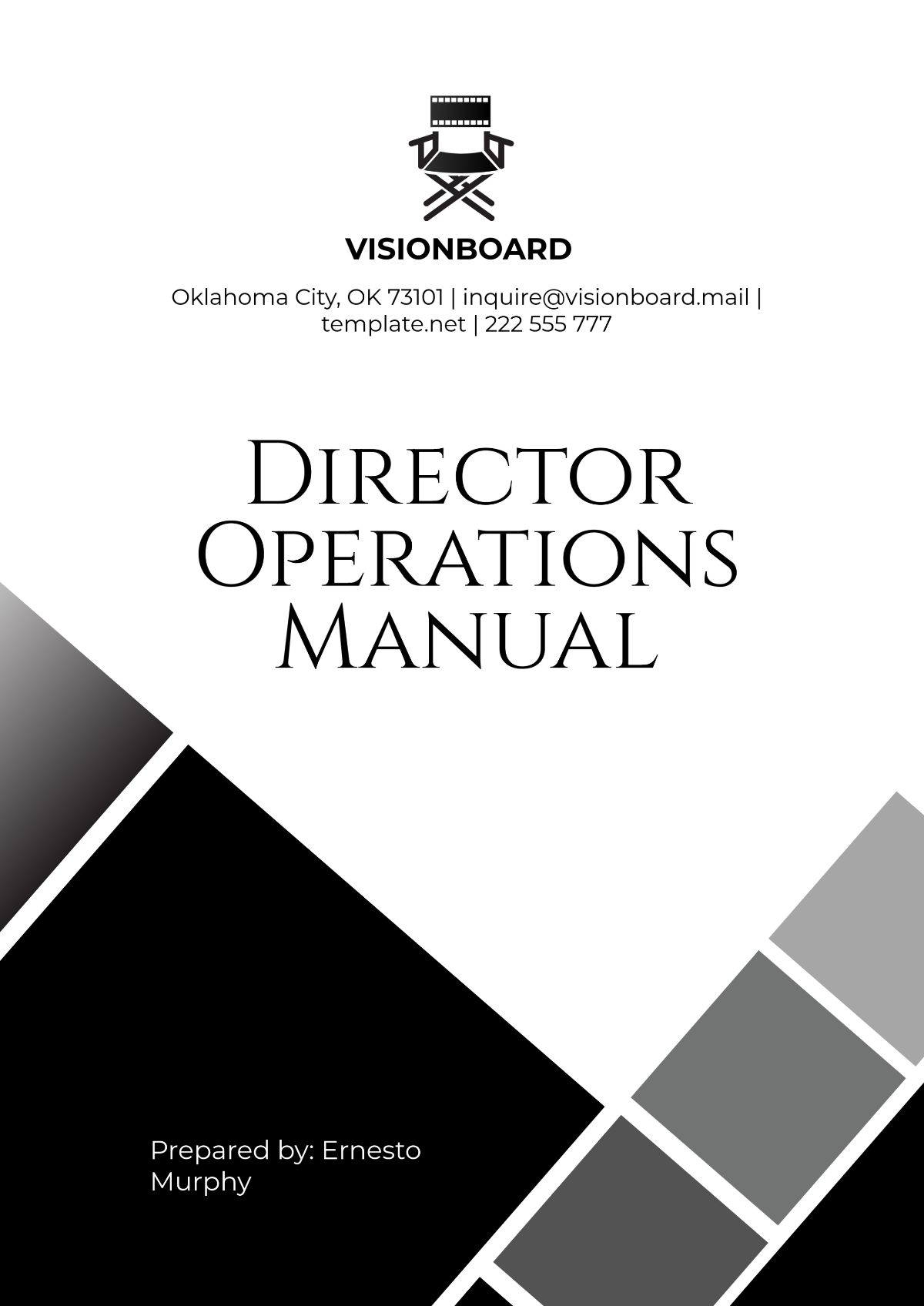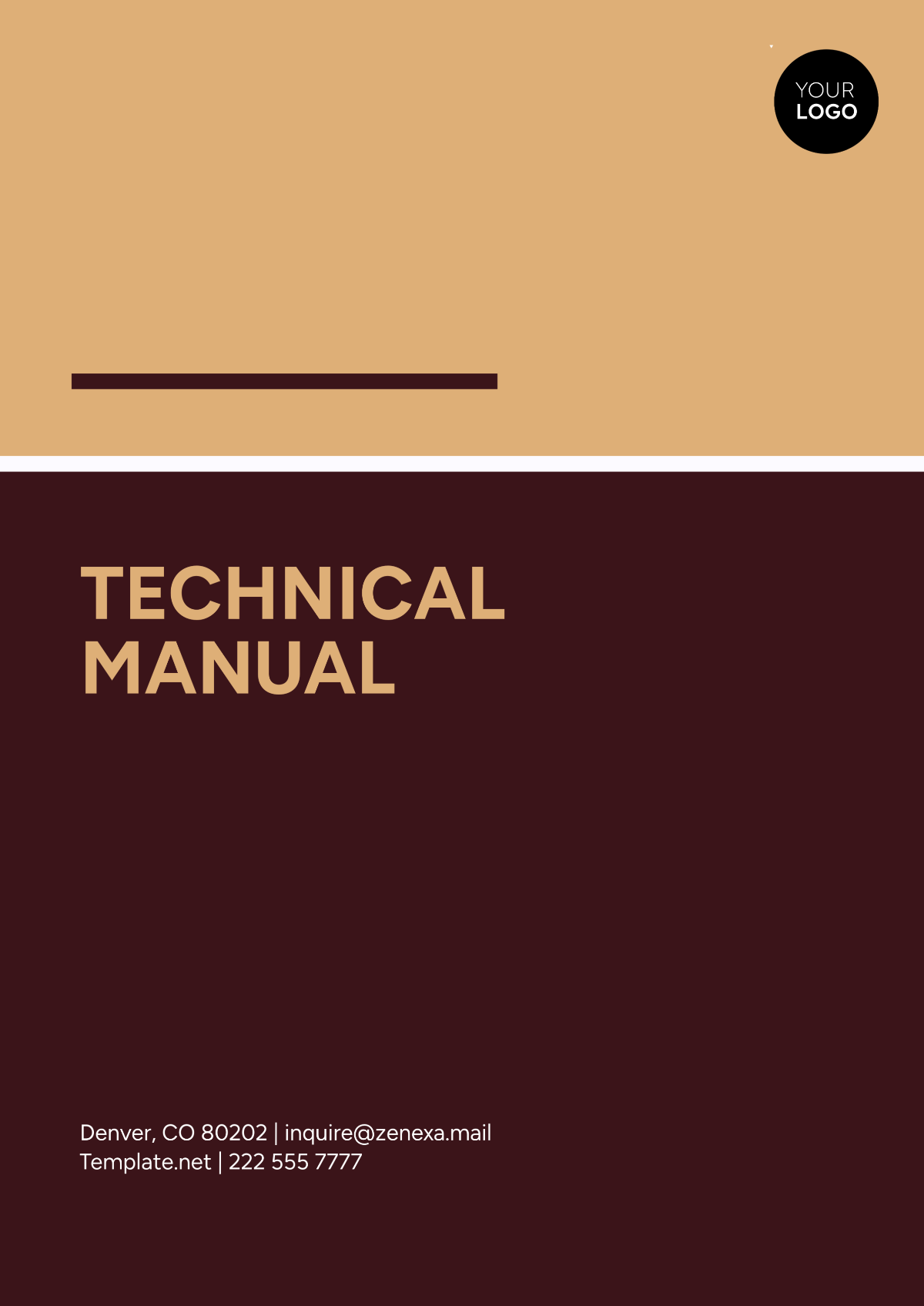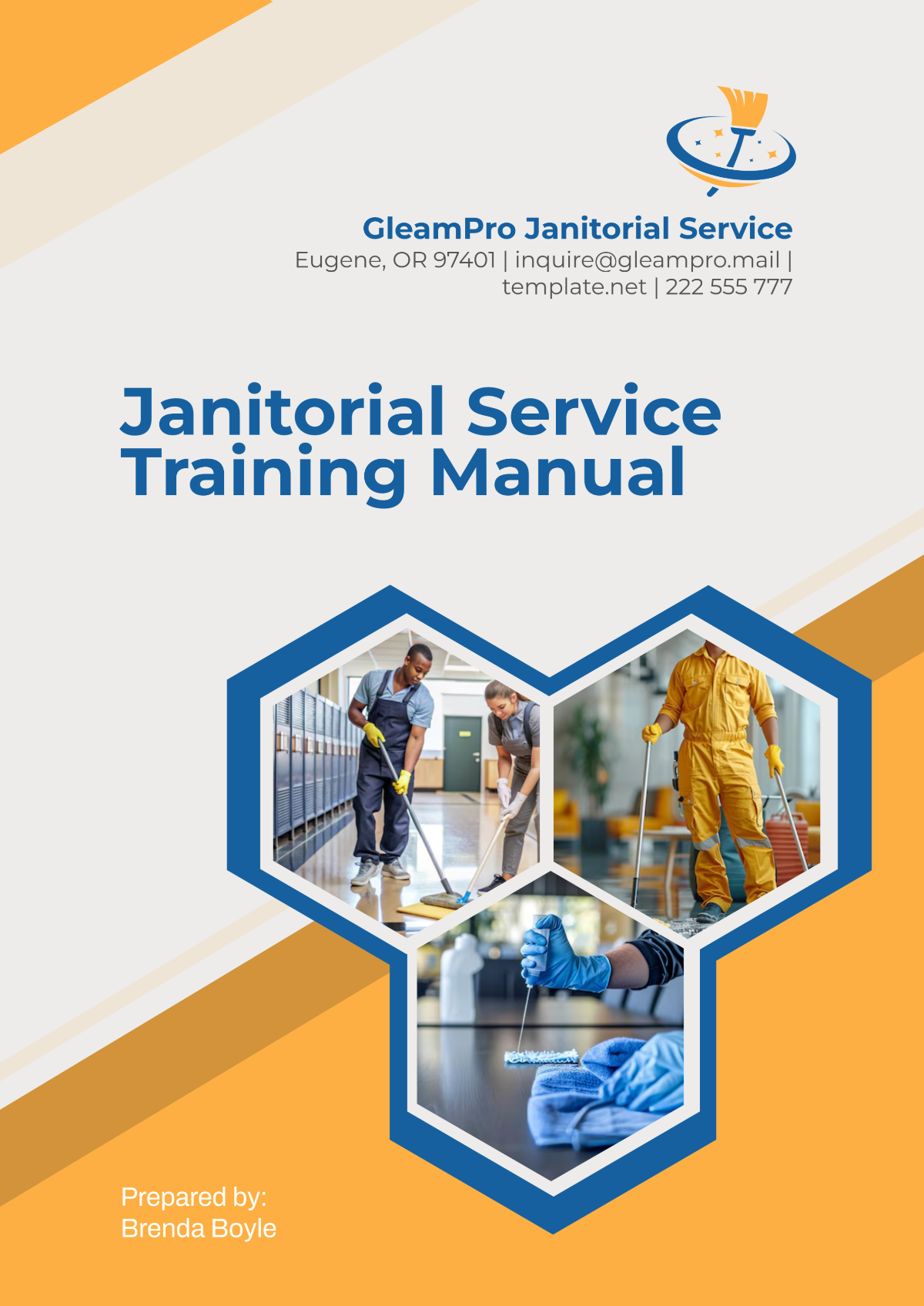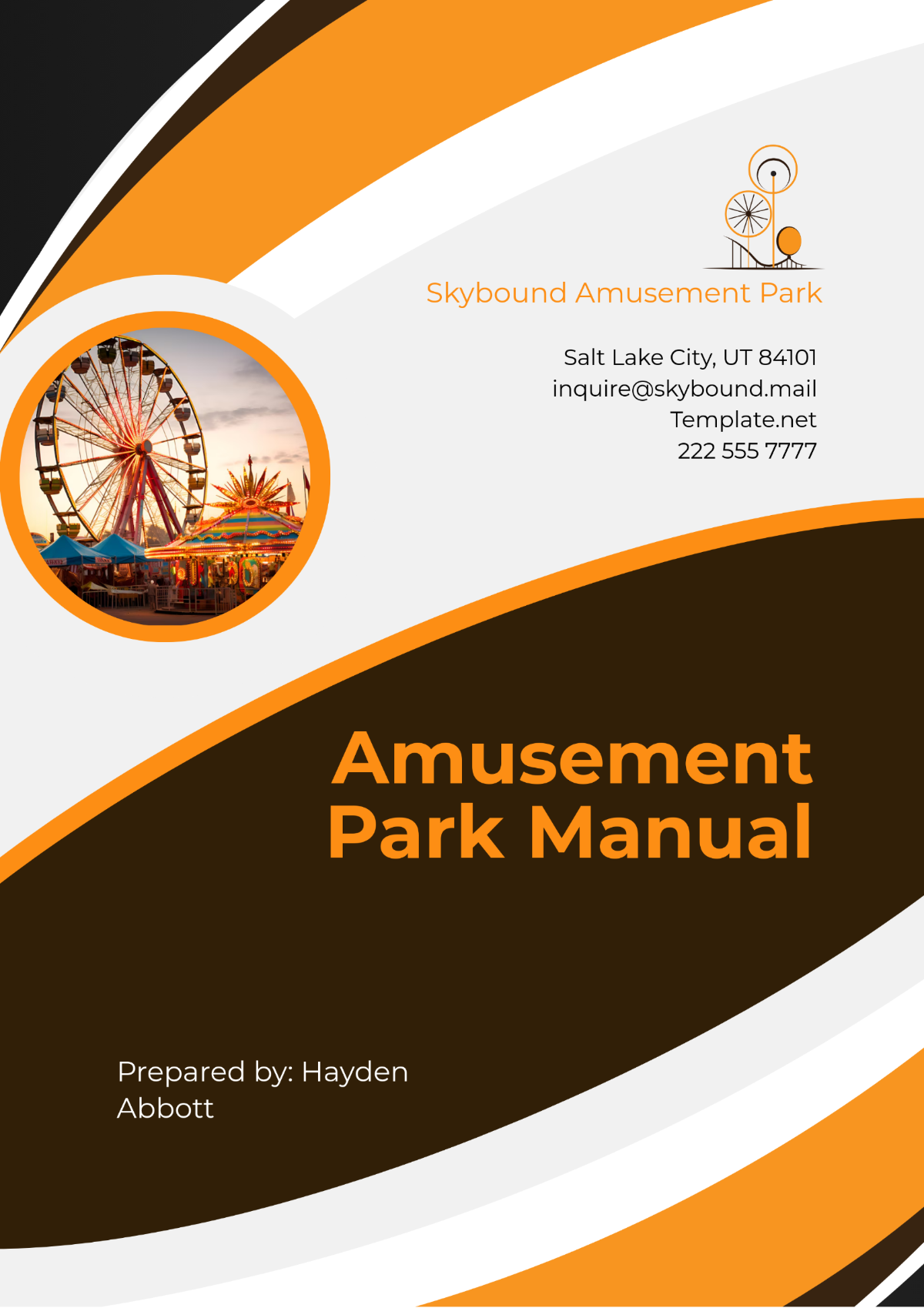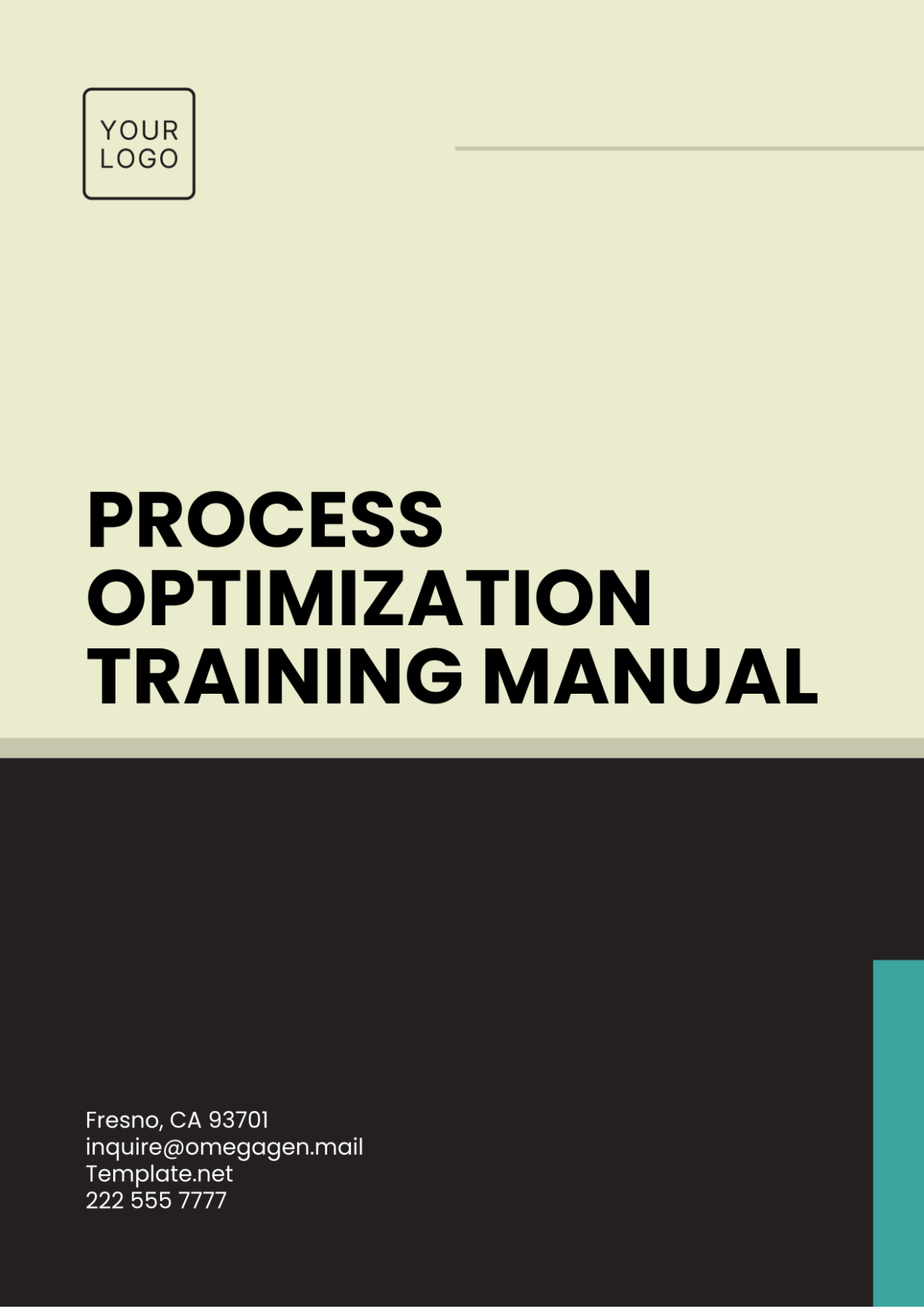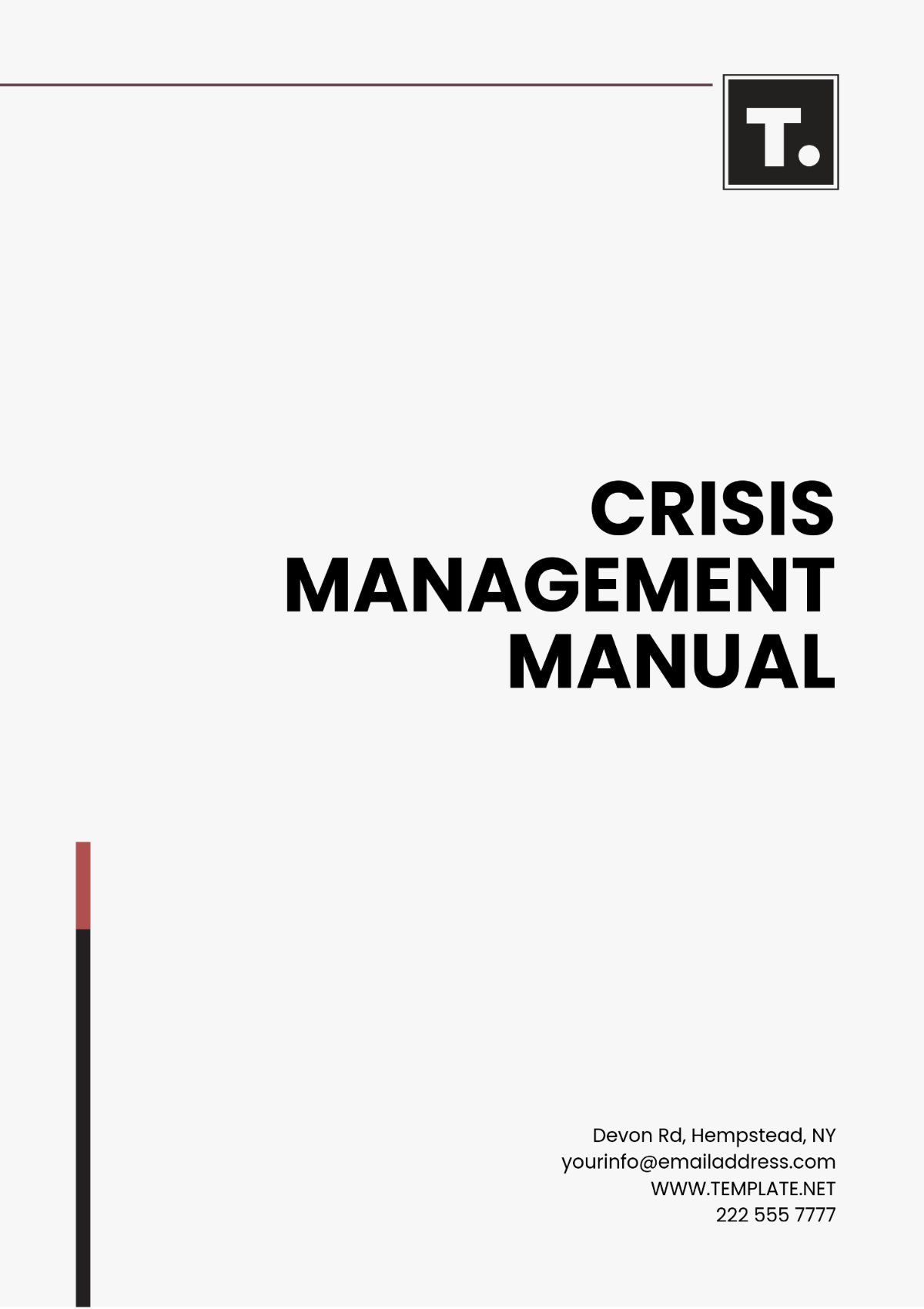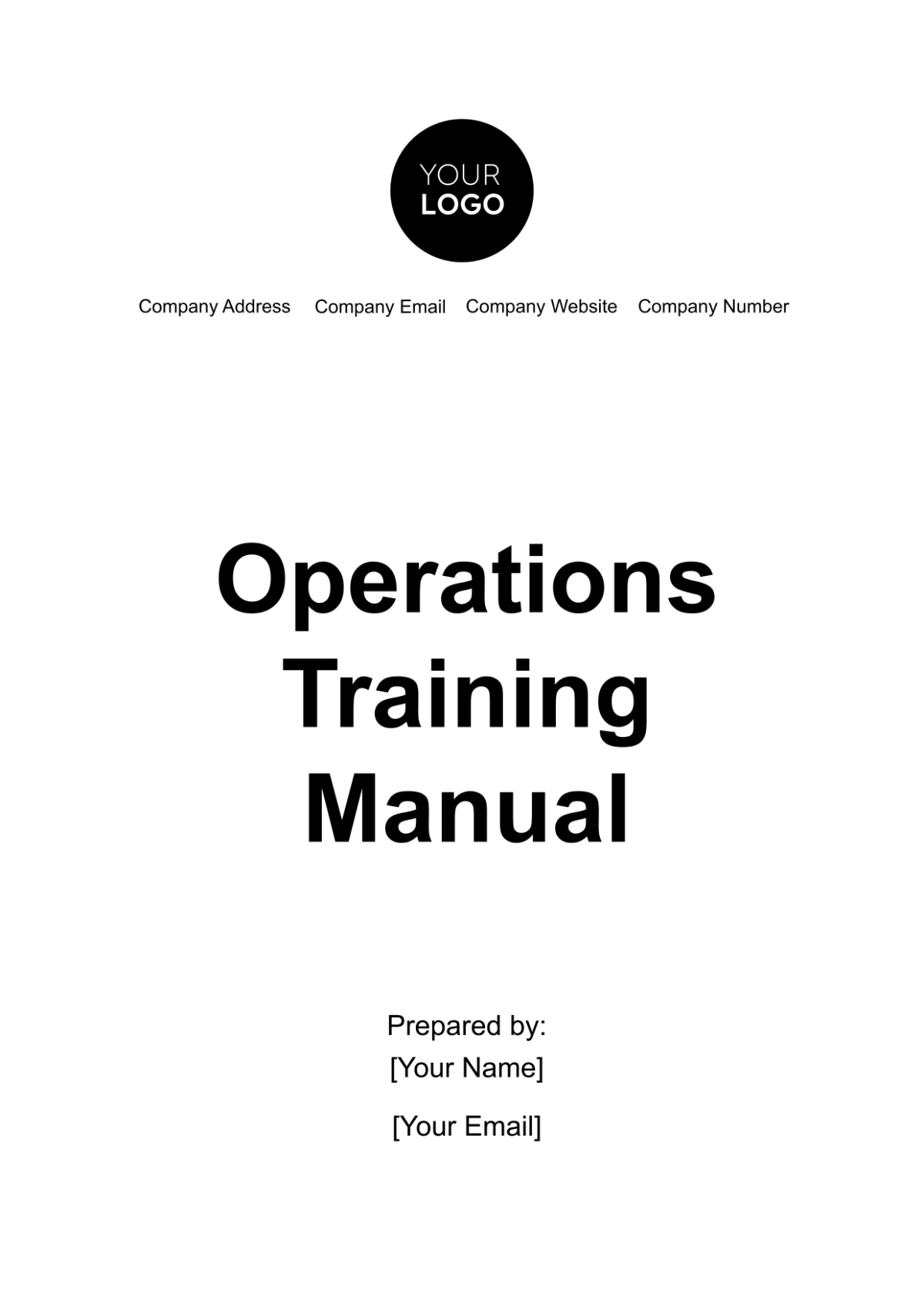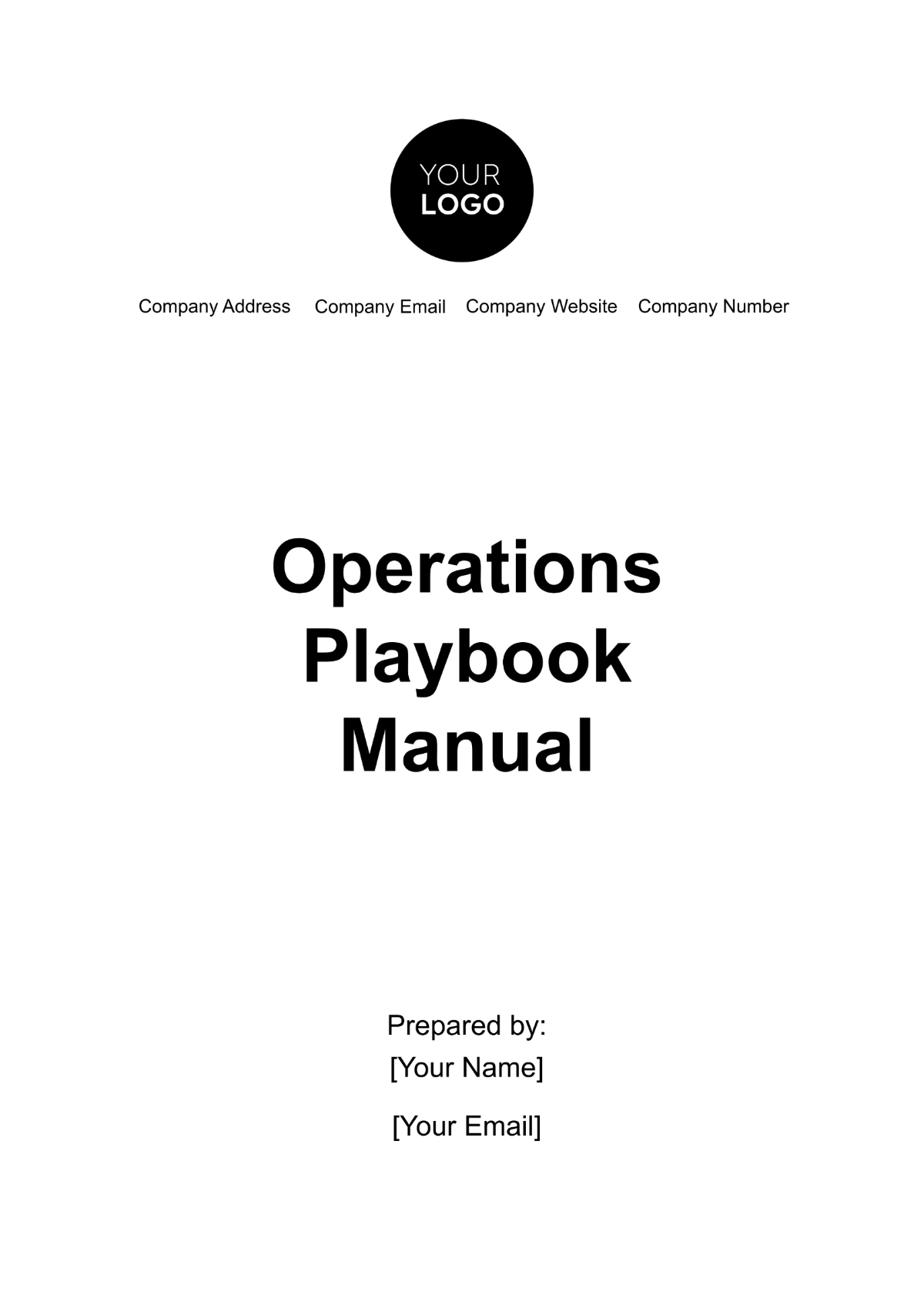Simple Bakery Employee Manual
I. Introduction
A. Purpose
Clarify Roles and Responsibilities: The primary purpose of this Bakery Employee Manual is to clearly define the roles and responsibilities of each employee at [Your Company Name]. By understanding your role, you will be better equipped to perform your duties effectively.
Promote Consistency: This manual aims to promote consistency in our bakery operations by providing standardized procedures and guidelines for all employees. Consistency ensures that we deliver high-quality products and services to our customers.
Enhance Communication: This manual serves as a communication tool to facilitate information sharing among employees. By providing detailed guidelines, we aim to improve understanding and collaboration within our team.
B. Scope
Operational Procedures: It covers all operational procedures within the bakery, including baking, packaging, and customer service. These procedures are essential to maintaining efficient and effective operations.
Health and Safety Guidelines: This manual includes health and safety guidelines to ensure a safe working environment for all employees. Adhering to these guidelines helps prevent accidents and injuries.
Company Policies: It outlines the company policies that govern employee conduct, attendance, and performance. These policies are designed to promote a positive and productive work environment.
Training and Development: This manual provides information on training programs and development opportunities available to employees. Continuous learning and improvement are key to our success.
Performance Evaluation: It includes guidelines for performance evaluation and feedback processes. Regular evaluations help employees understand their strengths and areas for improvement.
C. Target Audience
New Employees: It is designed to help new employees understand the expectations and responsibilities of their roles. It serves as a comprehensive guide to help you integrate smoothly into the team.
Existing Employees: This manual is a valuable resource for existing employees seeking clarification on procedures and policies. It provides updated information to ensure you stay informed about company changes.
Supervisors and Managers: It assists supervisors and managers in training and guiding their teams. It provides tools and resources to help you effectively lead and support your staff.
Temporary and Seasonal Workers: This manual provides essential information for temporary and seasonal workers to perform their duties efficiently. It ensures you understand the company's expectations and standards.
This manual is essential for maintaining consistency, efficiency, and safety in our bakery operations. It serves as a comprehensive guide to support employees in their roles and contribute to the success of [Your Company Name].
II. Workplace Policies
A. Code of Conduct
Professional Behavior: All employees are expected to conduct themselves professionally at all times. This includes treating coworkers, customers, and suppliers with respect and courtesy.
Punctuality and Attendance: Employees must arrive on time for their scheduled shifts and adhere to their assigned work hours. Punctuality demonstrates reliability and commitment to your role.
Dress Code: Employees are required to wear appropriate attire, including uniforms and safety gear, while on duty. Adhering to the dress code ensures a clean and professional appearance.
Confidentiality: Employees must maintain confidentiality regarding company information, including recipes, customer data, and internal communications. Protecting sensitive information is crucial to our business integrity.
B. Health and Safety
Safety Training: Employees are required to participate in safety training programs to ensure a safe working environment. Training covers topics such as equipment operation, fire safety, and emergency procedures.
Personal Protective Equipment (PPE): Employees must wear appropriate PPE, such as gloves and aprons, while handling food and operating equipment. PPE helps prevent injuries and contamination.
Hygiene Standards: Employees must adhere to strict hygiene standards, including handwashing and proper food handling practices. Maintaining hygiene is essential to ensuring the safety and quality of our products.
Reporting Hazards: Employees are encouraged to report any safety hazards or concerns to their supervisors immediately. Prompt reporting helps prevent accidents and maintain a safe workplace.
C. Anti-Discrimination and Harassment
Equal Opportunity: [Your Company Name] is committed to providing equal employment opportunities to all employees, regardless of race, gender, age, religion, or disability. We value diversity and inclusion in our workplace.
Harassment Prevention: The bakery strictly prohibits any form of harassment, including sexual harassment, bullying, and discrimination. We are committed to maintaining a respectful and supportive work environment.
Reporting Procedures: Employees who experience or witness harassment are encouraged to report the incident to their supervisor or HR department. Reports will be investigated promptly and confidentially.
Support and Resources: [Your Company Name] provides support and resources to employees affected by discrimination or harassment. We are committed to addressing and resolving issues fairly and promptly.
D. Employee Benefits
Health Insurance: Eligible employees are offered health insurance plans to support their well-being. Coverage options and enrollment details are provided during onboarding.
Paid Time Off: Employees are entitled to paid time off, including vacation, sick leave, and holidays. Time off requests must be submitted in advance and approved by a supervisor.
Retirement Plans: [Your Company Name] offers retirement savings plans to help employees plan for their future. Participation and contribution details are available through the HR department.
Employee Discounts: Employees receive discounts on bakery products as a token of appreciation for their hard work and dedication. Discounts are available for both personal use and gifts.
E. Communication and Feedback
Open Door Policy: [Your Company Name] encourages open communication between employees and management. We value your feedback and are committed to addressing your concerns.
Performance Reviews: Regular performance reviews are conducted to assess employee progress and set goals. Reviews provide an opportunity for feedback and professional development.
Suggestion Box: Employees are encouraged to share suggestions and ideas for improvement through the suggestion box. Your input helps us enhance our operations and services.
Team Meetings: Regular team meetings are held to discuss company updates, goals, and challenges. Meetings provide an opportunity for collaboration and information sharing.
Workplace policies are crucial for maintaining a positive and productive work environment. By adhering to these policies, employees contribute to the success and growth of [Your Company Name].
III. Roles and Responsibilities
The following table provides an overview of the primary roles and responsibilities within [Your Company Name]. Each position plays a vital role in ensuring the smooth operation of our bakery:
No. | Position | Description |
|---|---|---|
1 | Baker | Prepares and bakes all bakery products. |
2 | Pastry Chef | Creates and decorates pastries and desserts. |
3 | Cashier | Manages customer transactions and inquiries. |
4 | Store Manager | Oversees daily operations and staff management. |
5 | Inventory Clerk | Manages inventory and supplies. |
6 | Customer Service | Handles customer feedback and concerns. |
A. Baker
Prepare Dough and Batter: Responsible for preparing dough and batter according to recipes and production schedules. They must ensure consistency in product quality and taste.
Operate Baking Equipment: Operate ovens, mixers, and other baking equipment safely and efficiently. Proper equipment handling is crucial to maintaining quality standards.
Monitor Baking Process: Monitor the baking process to ensure products are baked to perfection. They must adjust oven settings and baking times as needed.
Maintain Cleanliness: Maintaining a clean and organized work area. Cleanliness is essential to ensuring food safety and preventing contamination.
Adhere to Recipes: Follow recipes accurately to ensure consistency in flavor and presentation. Attention to detail is crucial in maintaining product quality.
B. Pastry Chef
Create Pastries and Desserts: Responsible for creating a variety of pastries and desserts. They must ensure that all items meet quality and presentation standards.
Decorate and Present: Decorate pastries and desserts to enhance their visual appeal. Creative presentation is key to attracting customers and boosting sales.
Develop New Recipes: Develop new recipes and menu items. Innovation is important in keeping our offerings fresh and exciting.
Manage Inventory: Manage inventory and order supplies as needed. Efficient inventory management ensures that ingredients are always available.
C. Cashier
Process Transactions: Responsible for processing customer transactions accurately and efficiently. They must handle cash, credit, and digital payments securely.
Assist Customers: Assist customers with inquiries, product recommendations, and service requests. Providing excellent customer service is essential to creating a positive shopping experience.
Manage Cash Register: Responsible for balancing the cash register at the end of each shift. Accurate cash handling is crucial to maintaining financial integrity.
Maintain Store Appearance: Maintain a clean and organized store appearance. A tidy store environment enhances the customer experience.
D. Store Manager
Oversee Operations: Responsible for overseeing daily operations and ensuring that all tasks are completed efficiently. Effective management ensures smooth and productive operations.
Supervise Staff: Supervise staff and provide guidance and support. They must ensure that all employees adhere to company policies and procedures.
Monitor Performance: Monitor staff performance and provide feedback and coaching. Regular performance assessments help employees grow and improve.
Manage Inventory: Oversee inventory management and ensure that stock levels are maintained. Efficient inventory control is essential to minimizing waste and shortages.
Handle Customer Concerns: Address customer feedback and concerns promptly and professionally. Resolving issues effectively enhances customer satisfaction.
E. Inventory Clerk
Monitor Inventory Levels: Responsible for monitoring inventory levels and restocking as needed. Accurate inventory management is crucial to ensuring product availability.
Receive Shipments: Receive and inspect shipments for accuracy and quality. Proper receiving procedures help maintain inventory integrity.
Organize Storage Areas: Organize storage areas to ensure efficient access to supplies. Proper organization prevents inventory loss and damage.
Conduct Inventory Audits: Conduct regular audits to verify stock levels and identify discrepancies. Audits help maintain accurate inventory records.
Generate Reports: Generate inventory reports for management review. Reports provide insights into inventory trends and help inform decision-making.
F. Customer Service
Respond to Inquiries: Respond to customer inquiries and provide information about products and services. Prompt and accurate responses enhance customer satisfaction.
Handle Complaints: Handle customer complaints and resolve issues efficiently. Effective problem-solving skills are essential in maintaining customer loyalty.
Provide Feedback: Gather and relay customer feedback to management. Feedback provides valuable insights for improving products and services.
Coordinate with Other Departments: Coordinate with other departments to ensure customer needs are met. Collaboration enhances the overall customer experience.
Understanding the roles and responsibilities of each position is crucial to ensuring efficient and effective bakery operations. By working together, we can achieve our goals and provide exceptional products and services to our customers.
IV. Operational Procedures
The following table provides an overview of the key operational procedures within [Your Company Name]. These procedures are essential to maintaining efficient and effective bakery operations:
No. | Step | Description |
|---|---|---|
1 | Opening | Prepare the bakery for daily operations. |
2 | Production | Prepare and bake products according to recipes. |
3 | Quality Control | Ensure all products meet quality standards. |
4 | Customer Service | Provide exceptional service to customers. |
5 | Closing | Secure the bakery and prepare for the next day. |
A. Opening
Prepare Equipment: Employees are responsible for preparing equipment and workstations for the day's operations. This includes cleaning and organizing tools and supplies.
Check Inventory: Employees must check inventory levels and restock as needed. Ensuring sufficient stock is crucial to meeting customer demands.
Set Up Displays: Employees set up product displays and ensure the bakery is visually appealing. Attractive displays enhance the customer experience.
Review Schedule: Employees review the daily schedule and task assignments. Understanding the schedule helps ensure smooth operations.
Open Register: Cashiers must open the cash register and prepare for transactions. Proper cash handling is essential to maintaining financial integrity.
B. Production
Follow Recipes: Employees must follow recipes accurately to ensure consistency in product quality. Attention to detail is crucial in maintaining our standards.
Monitor Baking Process: Employees monitor the baking process to ensure products are baked to perfection. Adjusting oven settings and baking times may be necessary.
Maintain Cleanliness: Employees are responsible for maintaining a clean and organized work area. Cleanliness is essential to ensuring food safety and preventing contamination.
Adhere to Safety Guidelines: Employees must adhere to safety guidelines while operating equipment. Proper equipment handling is crucial to preventing accidents.
C. Quality Control
Inspect Products: Employees inspect products for quality and presentation before they are displayed or sold. Consistency in quality is crucial to customer satisfaction.
Address Issues: Employees address any quality issues promptly and take corrective action. Resolving issues helps maintain product integrity.
Record Data: Employees record quality control data for management review. Data provides insights into production trends and helps inform decision-making.
Provide Feedback: Employees provide feedback to supervisors on product quality and improvement opportunities. Feedback is valuable in maintaining and enhancing our offerings.
Conduct Tests: Employees conduct tests to ensure products meet quality standards. Tests may include taste tests and texture evaluations.
D. Customer Service
Greet Customers: Employees are responsible for greeting customers warmly and professionally. Positive interactions create a welcoming atmosphere.
Assist with Inquiries: Employees assist customers with product inquiries and recommendations. Providing helpful information enhances the customer experience.
Handle Transactions: Employees handle transactions accurately and efficiently. Proper cash handling is essential to maintaining financial integrity.
Address Complaints: Employees address customer complaints and resolve issues promptly. Effective problem-solving skills are crucial to maintaining customer satisfaction.
Encourage Feedback: Employees encourage customers to provide feedback on their experience. Feedback provides valuable insights for improvement.
E. Closing
Clean Equipment: Employees are responsible for cleaning equipment and workstations at the end of the day. Cleanliness is crucial to maintaining a safe and sanitary environment.
Restock Supplies: Employees restock supplies and prepare for the next day's operations. Ensuring sufficient stock is essential to meeting customer demands.
Secure Bakery: Employees secure the bakery by locking doors and setting alarms. Proper security measures help protect our assets.
Complete Reports: Employees complete end-of-day reports for management review. Reports provide insights into daily operations and help inform decision-making.
Close Register: Cashiers must close the cash register and reconcile transactions. Accurate cash handling is crucial to maintaining financial integrity.
Review Schedule: Employees review the next day's schedule and prepare accordingly. Understanding the schedule helps ensure smooth operations.
Operational procedures are crucial to maintaining consistency and efficiency in our bakery operations. By following these procedures, employees contribute to the success and growth of [Your Company Name].
V. Customer Service Standards
The following table provides an overview of our customer service standards at [Your Company Name]. These standards are essential to providing exceptional service and creating positive customer experiences:
No. | Standard | Description |
|---|---|---|
1 | Greeting | Welcome customers warmly and professionally. |
2 | Assistance | Provide helpful information and recommendations. |
3 | Responsiveness | Address inquiries and concerns promptly. |
4 | Courtesy | Treat customers with respect and kindness. |
5 | Resolution | Resolve issues efficiently and effectively. |
A. Greeting
Acknowledge Arrival: Acknowledge the arrival of customers with a warm greeting. Positive interactions create a welcoming atmosphere.
Use Names: Use customer names whenever possible. Personalizing interactions enhances the customer experience.
Smile: Smile and maintain friendly body language. A positive demeanor helps create a pleasant environment.
Offer Assistance: Offer assistance immediately upon greeting customers. Proactive service is key to meeting customer needs.
B. Assistance
Provide Information: Provide accurate and helpful information about products and services. Being knowledgeable helps build customer trust.
Make Recommendations: Make personalized recommendations based on customer preferences. Tailored suggestions enhance the shopping experience.
Answer Questions: Answer customer questions promptly and accurately. Providing clear information is essential to customer satisfaction.
Offer Samples: Offer samples to help customers make informed decisions. Sampling enhances the customer experience.
C. Responsiveness
Prompt Attention: Provide prompt attention to customers waiting for assistance. Quick responses help prevent customer frustration.
Address Inquiries: Address customer inquiries and concerns efficiently. Effective communication is crucial to customer satisfaction.
Follow-Up: Follow up with customers to ensure their needs are met. Proactive follow-up demonstrates commitment to service.
Resolve Issues: Resolve issues promptly and professionally. Effective problem-solving skills are essential in maintaining customer loyalty.
Communicate Clearly: Communicate clearly and concisely with customers. Clear communication helps prevent misunderstandings.
D. Courtesy
Be Polite: Employees are expected to be polite and respectful in all interactions with customers. Courtesy is key to creating positive experiences.
Show Appreciation: Express appreciation for customer visits and purchases. Gratitude helps build customer loyalty.
Listen Actively: Listen actively to customer needs and concerns. Active listening demonstrates empathy and understanding.
Maintain Composure: Maintain composure and professionalism, even in challenging situations. Professionalism is crucial to handling customer interactions effectively.
E. Resolution
Identify Issues: Identify customer issues and concerns accurately. Understanding the problem is the first step in finding a solution.
Offer Solutions: Offer viable solutions to address customer concerns. Providing options demonstrates commitment to resolving issues.
Seek Assistance: Seek assistance from supervisors or managers if needed. Collaborating with others helps ensure effective resolution.
Follow-Up: Follow up with customers to ensure their concerns are addressed. Follow-up demonstrates dedication to customer satisfaction.
Document Issues: Document customer issues and resolutions for management review. Documentation helps track trends and inform decision-making.
Learn from Feedback: Learn from customer feedback and use it to improve service. Continuous improvement is essential to maintaining high standards.
Customer service standards are essential to providing exceptional service and creating positive experiences for our customers. By adhering to these standards, employees contribute to the success and growth of [Your Company Name].
VI. Safety and Sanitation
The following table provides an overview of our safety and sanitation procedures at [Your Company Name]. These procedures are essential to maintaining a safe and sanitary environment:
No. | Procedure | Description |
|---|---|---|
1 | Personal Hygiene | Maintain personal hygiene and cleanliness. |
2 | Equipment Safety | Operate equipment safely and efficiently. |
3 | Cleaning Protocols | Adhere to cleaning and sanitation protocols. |
4 | Food Safety | Follow food safety guidelines and regulations. |
5 | Emergency Procedures | Implement emergency procedures effectively. |
A. Personal Hygiene
Handwashing: Employees must wash their hands regularly, especially before handling food. Proper handwashing helps prevent contamination.
Grooming Standards: Maintain grooming standards, including clean uniforms and hair restraints. Good grooming practices ensure a clean appearance.
Avoid Contamination: Employees must avoid touching their face or hair while working. Minimizing contact helps prevent cross-contamination.
Stay Home When Sick: Employees are encouraged to stay home if they are unwell. Preventing the spread of illness is crucial to maintaining a healthy workplace.
Wear Protective Gear: Employees must wear appropriate protective gear, such as gloves and aprons, while handling food. Protective gear helps ensure food safety.
B. Equipment Safety
Training Requirements: Employees are required to complete equipment safety training before operating any machinery. Training ensures proper understanding and handling of equipment.
Regular Inspections: Conduct regular equipment inspections to identify any issues. Prompt identification helps prevent malfunctions and accidents.
Report Malfunctions: Report any equipment malfunctions or safety concerns to their supervisor immediately. Timely reporting helps prevent injuries and downtime.
Follow Safety Guidelines: Employees must follow equipment safety guidelines and protocols. Adhering to guidelines helps prevent accidents and injuries.
C. Cleaning Protocols
Cleaning Schedule: Employees are responsible for adhering to the cleaning schedule for their assigned areas. Regular cleaning helps maintain a sanitary environment.
Use Approved Products: Employees must use approved cleaning products and tools. Using appropriate products ensures effective sanitation.
Disinfect Surfaces: Disinfect surfaces regularly, especially high-touch areas. Proper disinfection helps prevent the spread of germs.
Dispose of Waste Properly: Dispose of waste and trash properly. Proper disposal helps prevent contamination and maintain cleanliness.
Maintain Cleanliness: Employees are responsible for maintaining cleanliness in their work areas. Cleanliness is essential to ensuring food safety and quality.
D. Food Safety
Temperature Control: Monitor and control food temperatures to prevent spoilage. Proper temperature control is essential to food safety.
Label and Date: Employees are responsible for labeling and dating food items to ensure freshness. Accurate labeling helps prevent foodborne illnesses.
Prevent Cross-Contamination: Prevent cross-contamination by using separate utensils and surfaces for different foods. Avoiding cross-contact is crucial to food safety.
Follow Regulations: Employees must adhere to food safety regulations and guidelines. Compliance with regulations ensures the safety and quality of our products.
Conduct Inspections: Conduct regular food safety inspections and report any concerns. Inspections help identify potential risks and areas for improvement.
E. Emergency Procedures
Evacuation Plan: Be familiar with the emergency evacuation plan and designated exits. Knowing the plan helps ensure a safe and orderly evacuation.
First Aid Kits: Know the location of first aid kits and how to use them. Access to first aid supplies is crucial in emergency situations.
Fire Safety: Employees must know how to operate fire extinguishers and other fire safety equipment. Proper equipment use helps prevent the spread of fires.
Emergency Contacts: Employees should be aware of emergency contacts and procedures. Knowing who to contact helps ensure prompt response in emergencies.
Participate in Drills: Participate in emergency drills and training sessions. Practice helps prepare for real-life emergencies.
Safety and sanitation procedures are essential to maintaining a safe and sanitary environment for employees and customers. By adhering to these procedures, employees contribute to the health and well-being of [Your Company Name].
VII. Training and Development
The following table provides an overview of our training and development programs at [Your Company Name]. These programs are essential to supporting employee growth and enhancing skills:
No. | Program | Description |
|---|---|---|
1 | Onboarding | Comprehensive introduction to the company and role. |
2 | Skills Training | Development of technical and soft skills. |
3 | Performance Feedback | Regular feedback and performance assessments. |
4 | Leadership Development | Preparation for leadership roles and responsibilities. |
5 | Continuing Education | Opportunities for ongoing learning and growth. |
A. Onboarding
Orientation Session: New employees participate in an orientation session to learn about the company culture and values. Understanding our mission and vision is crucial to becoming a part of the team.
Role Introduction: Employees receive an introduction to their specific roles and responsibilities. Clarifying expectations helps ensure a smooth transition into the workplace.
Meet the Team: New employees have the opportunity to meet and interact with their colleagues. Building relationships fosters a supportive work environment.
Tour of Facilities: Employees receive a tour of the facilities to familiarize themselves with the workspace. Familiarity with the environment helps ease the transition into the workplace.
B. Skills Training
Technical Skills: Employees receive training on technical skills relevant to their roles. Developing technical skills is essential to performing tasks effectively.
Soft Skills: Participate in soft skills training to enhance communication, teamwork, and problem-solving abilities. Strong soft skills contribute to a positive work environment.
Cross-Training: Employees have the opportunity to cross-train in different areas of the bakery. Cross-training enhances versatility and understanding of various operations.
Skill Assessments: Employees participate in regular skill assessments to identify areas for improvement. Assessments provide valuable feedback for professional development.
C. Performance Feedback
Regular Reviews: Employees receive regular performance reviews to assess progress and set goals. Reviews provide valuable feedback and recognition for accomplishments.
Goal Setting: Work with supervisors to set performance goals and objectives. Goal setting provides direction and motivation for professional growth.
Development Plans: Create development plans to outline steps for achieving goals. Development plans help guide personal and professional growth.
Coaching Sessions: Participate in coaching sessions to receive personalized guidance and support. Coaching helps address challenges and enhance performance.
Feedback Channels: Employees have access to feedback channels to share insights and suggestions. Open feedback channels promote continuous improvement.
D. Leadership Development
Leadership Workshops: Employees have the opportunity to participate in leadership workshops to develop essential leadership skills. Workshops focus on communication, decision-making, and team management.
Mentorship Programs: Engage in mentorship programs to receive guidance from experienced leaders. Mentorship provides valuable insights and support for career advancement.
Leadership Assessments: Participate in leadership assessments to identify strengths and areas for improvement. Assessments provide valuable feedback for leadership development.
Project Management Training: Employees receive training in project management skills to enhance organizational and planning abilities. Effective project management is crucial to successful leadership.
Leadership Opportunities: Employees are encouraged to take on leadership roles and responsibilities. Opportunities for leadership foster growth and development.
Peer Collaboration: Employees have the opportunity to collaborate with peers on leadership initiatives. Collaboration enhances learning and skill development.
E. Continuing Education
Workshops and Seminars: Employees have access to workshops and seminars to learn about industry trends and developments. Continuous learning is essential to staying competitive.
Online Courses: Employees have the option to enroll in online courses to enhance their skills and knowledge. Online learning provides flexibility and convenience.
Certification Programs: Employees can participate in certification programs to validate their skills and expertise. Certification demonstrates commitment to professional growth.
Tuition Reimbursement: Employees may be eligible for tuition reimbursement for courses related to their roles. Supporting education helps promote lifelong learning.
Learning Resources: Employees have access to learning resources, such as books and articles, to support their development. Access to resources encourages self-directed learning.
Networking Opportunities: Employees are encouraged to participate in networking events and conferences. Networking helps build relationships and expand knowledge.
Professional Development Plans: Employees create professional development plans to outline their learning goals and strategies. Development plans provide direction and focus for growth.
Training and development programs are essential to supporting employee growth and enhancing skills. By investing in our employees, [Your Company Name] aims to create a motivated and skilled workforce that contributes to the success and growth of our company.
VIII. Risk and Mitigation
The following table provides an overview of potential risks and mitigation strategies at [Your Company Name]. Identifying and addressing risks is essential to ensuring a safe and successful workplace:
No. | Risk | Mitigation Strategy |
|---|---|---|
1 | Equipment Failure | Regular maintenance and inspections. |
2 | Employee Injury | Safety training and protective equipment. |
3 | Food Contamination | Strict hygiene and sanitation practices. |
4 | Inventory Shortages | Efficient inventory management and ordering systems. |
5 | Customer Complaints | Responsive customer service and issue resolution. |
A. Equipment Failure
Scheduled Maintenance: Regular maintenance and servicing of equipment help prevent failures and prolong equipment life. Maintenance schedules should be adhered to for optimal performance.
Regular Inspections: Conducting regular inspections of equipment helps identify potential issues early. Early detection allows for timely repairs and reduces downtime.
Spare Parts Inventory: Maintaining an inventory of essential spare parts ensures quick repairs in case of equipment failure. Having spare parts on hand minimizes operational disruptions.
Operator Training: Providing thorough training to employees on equipment operation helps prevent misuse and malfunctions. Proper training enhances equipment longevity.
Reporting Protocols: Employees should be encouraged to report any equipment issues promptly. Timely reporting ensures that repairs can be scheduled without delay.
B. Employee Injury
Safety Training: Comprehensive safety training programs help employees understand workplace hazards and preventive measures. Training should be conducted regularly and updated as needed.
Protective Equipment: Providing employees with appropriate protective equipment, such as gloves and goggles, helps minimize injury risks. Ensuring proper use of protective gear is essential.
Safe Work Practices: Implementing safe work practices, such as lifting techniques and ergonomic workstations, reduces the risk of injury. Encouraging safe behavior contributes to a safer workplace.
Accident Reporting: Establishing clear accident reporting procedures ensures that incidents are documented and investigated. Prompt reporting allows for corrective action and prevents recurrence.
Emergency Response Training: Training employees on emergency response procedures, such as first aid and evacuation plans, enhances preparedness and safety.
C. Food Contamination
Hygiene Standards: Enforcing strict hygiene standards, such as regular handwashing and clean uniforms, helps prevent food contamination. Maintaining high standards is crucial to food safety.
Sanitation Protocols: Adhering to sanitation protocols, such as cleaning schedules and disinfection procedures, minimizes contamination risks. Consistent sanitation practices ensure product quality.
Supplier Verification: Verifying suppliers and ensuring that they adhere to food safety standards helps reduce contamination risks. Building strong relationships with reliable suppliers is important.
Temperature Monitoring: Monitoring and controlling food storage temperatures helps prevent spoilage and contamination. Regular temperature checks are essential to food safety.
Cross-Contamination Prevention: Implementing procedures to prevent cross-contamination, such as separate storage and preparation areas for different foods, enhances safety.
D. Inventory Shortages
Inventory Management: Efficient inventory management systems help ensure adequate stock levels and minimize shortages. Accurate tracking and forecasting are essential to meeting demand.
Reorder Protocols: Establishing reorder protocols, such as setting reorder points and safety stock levels, helps prevent stockouts. Regular review of inventory data supports effective decision-making.
Supplier Relationships: Building strong relationships with suppliers helps ensure timely delivery and availability of products. Collaborating with suppliers enhances inventory management.
Demand Forecasting: Using demand forecasting techniques, such as sales data analysis and market trends, helps anticipate customer needs and adjust inventory accordingly.
Contingency Planning: Developing contingency plans for potential supply chain disruptions, such as backup suppliers and alternative sourcing, enhances resilience.
E. Customer Complaints
Responsive Service: Providing responsive and attentive customer service helps address complaints promptly. Listening to customers and empathizing with their concerns builds trust.
Issue Resolution: Establishing clear procedures for issue resolution ensures that complaints are handled efficiently and effectively. Timely resolution contributes to customer satisfaction.
Feedback Channels: Encouraging customer feedback through surveys and feedback forms provides valuable insights for improvement. Understanding customer perspectives helps identify areas for enhancement.
Employee Training: Training employees on customer service skills, such as communication and problem-solving, enhances their ability to handle complaints professionally.
Continuous Improvement: Using customer feedback to drive continuous improvement initiatives helps enhance products and services. Commitment to improvement demonstrates dedication to quality.
Identifying and addressing potential risks is essential to ensuring a safe and successful workplace. By implementing effective mitigation strategies, [Your Company Name] can enhance its operations and achieve its goals.
IX. Marketing and Sales Strategies
The following table provides an overview of our marketing and sales strategies at [Your Company Name]. These strategies are designed to increase brand awareness and drive sales:
No. | Strategy | Description |
|---|---|---|
1 | Social Media | Engage with customers and promote products online. |
2 | Promotions | Offer special promotions and discounts to attract customers. |
3 | Community Events | Participate in local events to increase visibility. |
4 | Loyalty Programs | Implement loyalty programs to encourage repeat business. |
5 | Partnerships | Collaborate with other businesses to expand reach. |
A. Social Media
Platform Selection: Selecting appropriate social media platforms, such as Instagram and Facebook, helps reach target audiences. Understanding platform demographics is crucial to effective engagement.
Content Creation: Creating engaging and visually appealing content helps attract and retain followers. Consistent posting and storytelling enhance brand presence.
Customer Interaction: Engaging with customers through comments and direct messages builds relationships and trust. Prompt responses demonstrate commitment to customer service.
Influencer Collaboration: Collaborating with influencers to promote products and services enhances brand visibility. Influencers help reach new audiences and build credibility.
Performance Analysis: Analyzing social media performance metrics, such as engagement rates and follower growth, informs strategy adjustments. Continuous analysis supports effective marketing efforts.
B. Promotions
Seasonal Offers: Offering seasonal promotions and discounts attracts new customers and encourages purchases. Tailoring promotions to customer preferences enhances appeal.
Limited-Time Deals: Creating limited-time deals creates a sense of urgency and encourages immediate action. Time-sensitive offers drive sales and boost demand.
Bundling: Offering product bundles at a discounted price increases perceived value and encourages larger purchases. Bundling enhances customer satisfaction and sales.
Referral Programs: Implementing referral programs incentivizes customers to refer friends and family. Referrals help expand customer base and increase sales.
Exclusive Offers: Providing exclusive offers to loyal customers builds loyalty and strengthens relationships. Rewarding loyalty enhances customer retention.
C. Community Events
Event Participation: Participating in local events, such as farmers' markets and fairs, increases brand visibility and community engagement. Being present in the community enhances brand reputation.
Sponsorship Opportunities: Sponsoring local events and initiatives demonstrates commitment to community involvement. Sponsorship enhances brand image and awareness.
Product Sampling: Offering product samples at events allows potential customers to experience products firsthand. Sampling encourages trial and purchase.
Collaboration with Nonprofits: Collaborating with local nonprofits on community initiatives enhances social responsibility and brand image. Giving back to the community strengthens relationships.
Event Promotion: Promoting participation in community events through social media and other channels increases attendance and engagement. Effective promotion maximizes event impact.
D. Loyalty Programs
Point System: Implementing a point-based loyalty program rewards customers for purchases and encourages repeat business. Accumulating points enhances customer engagement.
Tiered Rewards: Offering tiered rewards based on customer spending levels incentivizes higher spending and loyalty. Tiered rewards create a sense of achievement and exclusivity.
Birthday Discounts: Providing birthday discounts and special offers enhances customer relationships and loyalty. Personalized offers make customers feel valued.
Referral Incentives: Offering incentives for customer referrals encourages word-of-mouth marketing. Referral incentives expand customer base and drive sales.
Program Promotion: Promoting loyalty programs through various channels increases awareness and participation. Effective communication maximizes program benefits.
E. Partnerships
Cross-Promotion: Collaborating with complementary businesses on cross-promotion initiatives expands reach and customer base. Cross-promotion enhances brand visibility and credibility.
Joint Events: Hosting joint events with partners enhances engagement and brand exposure. Joint events provide opportunities for collaboration and networking.
Product Collaborations: Collaborating on product offerings with partners enhances value and appeal. Joint product development creates unique offerings for customers.
Discount Collaborations: Offering discounts through partnerships incentivizes purchases and expands customer reach. Collaborating on promotions enhances sales potential.
Networking Opportunities: Participating in networking events and industry associations builds relationships and identifies partnership opportunities. Networking fosters collaboration and growth.
Implementing effective marketing and sales strategies is essential to increasing brand awareness and driving sales. By leveraging these strategies, [Your Company Name] aims to achieve its marketing and sales objectives.
X. Key Points
It is important to keep in mind the following:
Personal Hygiene: Employees must adhere to strict personal hygiene standards, including regular handwashing and clean uniforms.
Equipment Safety: Proper training and regular maintenance of bakery equipment are essential for safe and efficient operations.
Cleaning Protocols: Following scheduled cleaning and sanitation procedures helps maintain a sanitary environment.
Food Safety: Adhering to temperature control, proper labeling, and prevention of cross-contamination ensures food safety.
Onboarding: New employees receive comprehensive orientation, role introduction, and facility tours to ease their transition.
Skills Training: Ongoing technical and soft skills training, including cross-training, enhances employee capabilities.
Performance Feedback: Regular performance reviews, goal setting, and development plans support employee growth.
Leadership Development: Opportunities for leadership training, mentorship, and project management prepare employees for advanced roles.
Continuing Education: Access to workshops, online courses, and certification programs promotes lifelong learning and professional development.
Emergency Procedures: Employees should be familiar with evacuation plans, first aid kits, and emergency contacts.

